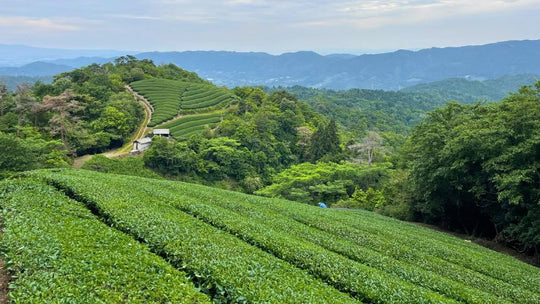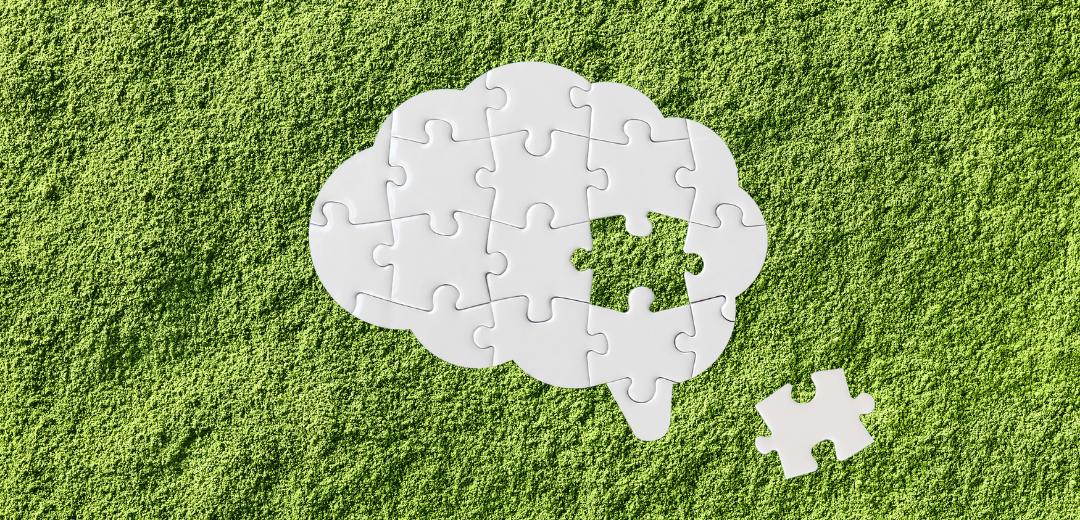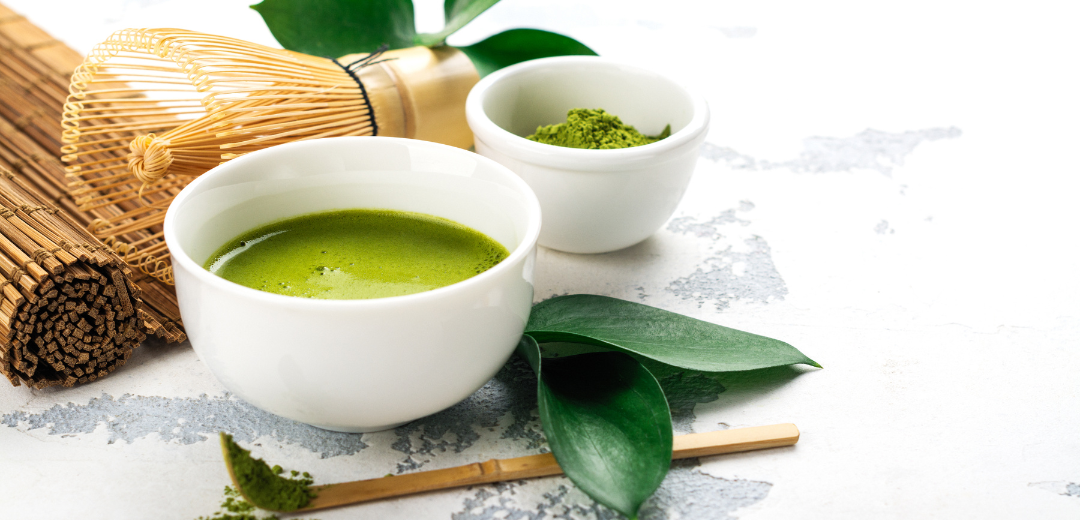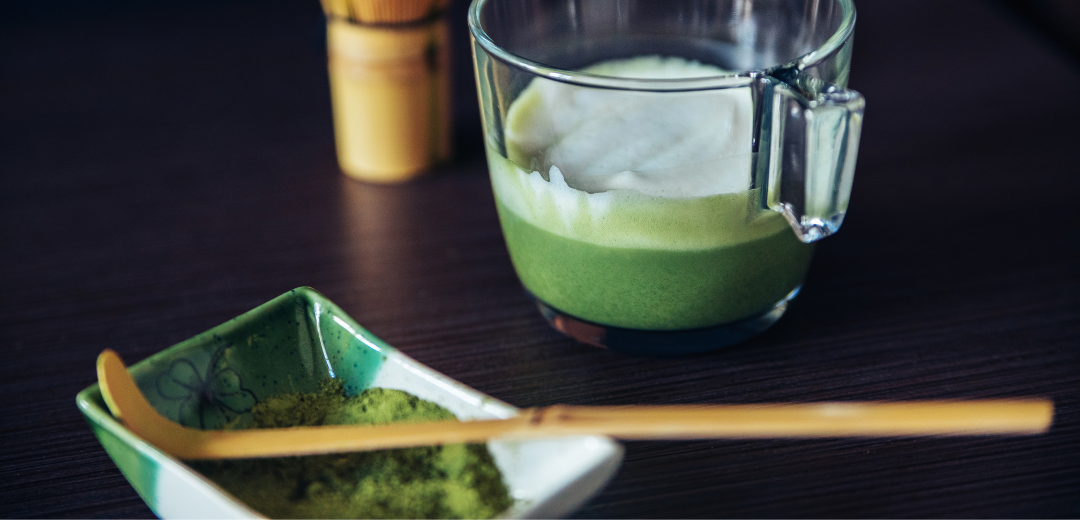
News
Matcha Shortage & Price Surge in Japan 2025 – What's Really Happening?
Matcha prices have more than doubled in 2025, and supply from Kyoto has dropped sharply. As a Japan-based matcha exporter, we break down what’s really happening—and what it means for...
What’s happening, what caused it, and what to expect next
If you’ve recently tried to buy matcha—especially high-grade ceremonial matcha—you may have noticed something unusual: rising prices, limited availability, and delayed shipments.
We’re based in Japan and work directly with tea farmers and wholesalers. Here's a clear breakdown of what’s going on and what it means for our industry and customers worldwide.
📉 Matcha Supply is Down — By a Lot

Matcha is made from tencha, a type of shaded green tea leaf. The 2025 harvest in Kyoto Prefecture, the heart of Uji matcha, saw steep production drops:
| Tea Type | 2024 Volume | 2025 Volume | Change |
|---|---|---|---|
| Uji Tencha (hand-picked) | 10,216 kg | 6,140 kg | –40% |
| First-harvest Tencha (machine-picked) | 529,960 kg | 434,521 kg | –18% |
These numbers were officially reported by the Kyoto Tea Industry Association and JA Zen-Noh Kyoto in June 2025.
💴 Prices Have More Than Doubled

With supply tight and global demand stronger than ever, prices at auction skyrocketed:
| Tea Type | 2024 Price/kg | 2025 Price/kg | Change |
|---|---|---|---|
| Uji Tencha | ¥20,024 | ¥43,330 | +116% |
| First-harvest Tencha | ¥5,402 | ¥14,541 | +169% |
These price hikes are unprecedented and have already begun to affect product pricing and availability worldwide.
🔍 What’s Driving the Shortage?
The shortage isn’t due to a single issue—it's a perfect storm:
1. Global Matcha Demand Is Booming
Health-conscious consumers are fueling demand for matcha in all forms—from traditional tea bowls to matcha lattes, smoothies, sweets, and supplements. Even the food service and cosmetic industries are using more matcha than ever before.
2. Climate & Agricultural Challenges
Japan saw unusually hot and dry spring weather in 2025. Some regions reported stress to tea plants, affecting leaf quality and yield. This is especially true in Kyoto, where traditional, non-mechanized growing methods are still common.
3. Shift in Tea Production Priorities
To meet demand, many farms are switching from producing gyokuro or sencha to tencha (the raw material for matcha). While this shift is strategic, it also reduces diversity and limits output in the short term.
4. Cost of Materials & Labor
Fuel, packaging, fertilizer, and labor costs have all gone up. Combined with the weak yen, production is more expensive than ever, especially for organic and hand-picked teas.
🗾What Does National Data Show?
Interestingly, nationwide tencha production has increased over the past decade. According to Japan’s Ministry of Agriculture, 2024 tencha output was 2.7x higher than in 2014.
But that’s only part of the story: Kyoto—home to the most prized Uji matcha—saw dramatic drops in 2025. So while the total supply across Japan is up, the best quality matcha is now in short supply.
🔮 What to Expect Going Forward
At Premium Health Japan, we’ve been fielding many questions from customers and partners around the world. Here’s what we believe you can expect:
✅ Prices Will Remain High—For Now
Tencha and matcha prices won’t return to 2022 levels anytime soon. However, some stabilization may come after the autumn harvest, or with larger spring yields in 2026.
✅ Supply Chains Are Being Adjusted
Farmers, auction houses, and buyers are all adapting. There’s more focus on improving yields, replanting tea fields, and modernizing production while maintaining quality.
✅ Matcha is Not Going Away
Despite the shock, Japan’s matcha industry is strong. Smart investment, strategic growth, and international demand will ensure that authentic matcha continues to be available, though you may need to be more selective.
💬 What We’re Doing at Premium Health Japan
We’re proud to operate directly in Japan, working face-to-face with producers. We’ve secured strong relationships with farmers, cooperatives, and millers, which means:
-
We source our tea directly from Uji-based farms, including rare, hand-picked cultivars.
-
We’ve already adjusted pricing to reflect current auction rates.
-
We minimize waste, store efficiently, and ship globally from our hubs in Japan, the USA, the EU, and Australia.
If you're a wholesale buyer or OEM partner, we can guide you through current options and expected lead times.
In Summary
| Key Issue | Details |
|---|---|
| Supply | Uji tencha down 40–60% in 2025 |
| Prices | Auction prices up 116–169% YoY |
| Drivers | Climate impact, booming demand, higher costs |
| Outlook | Supply recovery possible in 2026–2028 |
| What We Offer | Direct Kyoto sourcing, reliable distribution, complete transparency |
📌 Additional Sources
We recommend reading these non-commercial articles for more background:
Have questions about our products, OEM options, or pricing?
We’re happy to help. Contact us, and our bilingual team will respond to you.
10 Best Teas for Focus: Boost your Brain with Tea
Embark on a journey through the finest teas for mental acuity with '10 Best Teas for Focus: Boost your Brain with Tea.' From the calming effects of sage to the...

In our fast-paced world, maintaining mental sharpness is key. What if the secret to enhanced focus and cognitive clarity lies in your tea cup? This article introduces you to the top ten teas renowned for their brain-boosting properties. Each tea, with its unique blend of flavors and health benefits, offers more than just a refreshing break; they are a natural ally in your quest for improved mental performance.
From ancient herbal remedies to modern scientific discoveries, these teas encompass a world of tradition and innovation. As we journey through each selection, we'll uncover the secrets behind their cognitive benefits. Whether you're seeking to combat mental fatigue, improve concentration, or simply enjoy a healthier alternative to your daily coffee, these teas are poised to transform your routine.
Join us as we explore these remarkable teas, each with its own story and ability to enhance your mental prowess. The good news? The journey to discovering the best tea for the ultimate brain boost is just a sip away.
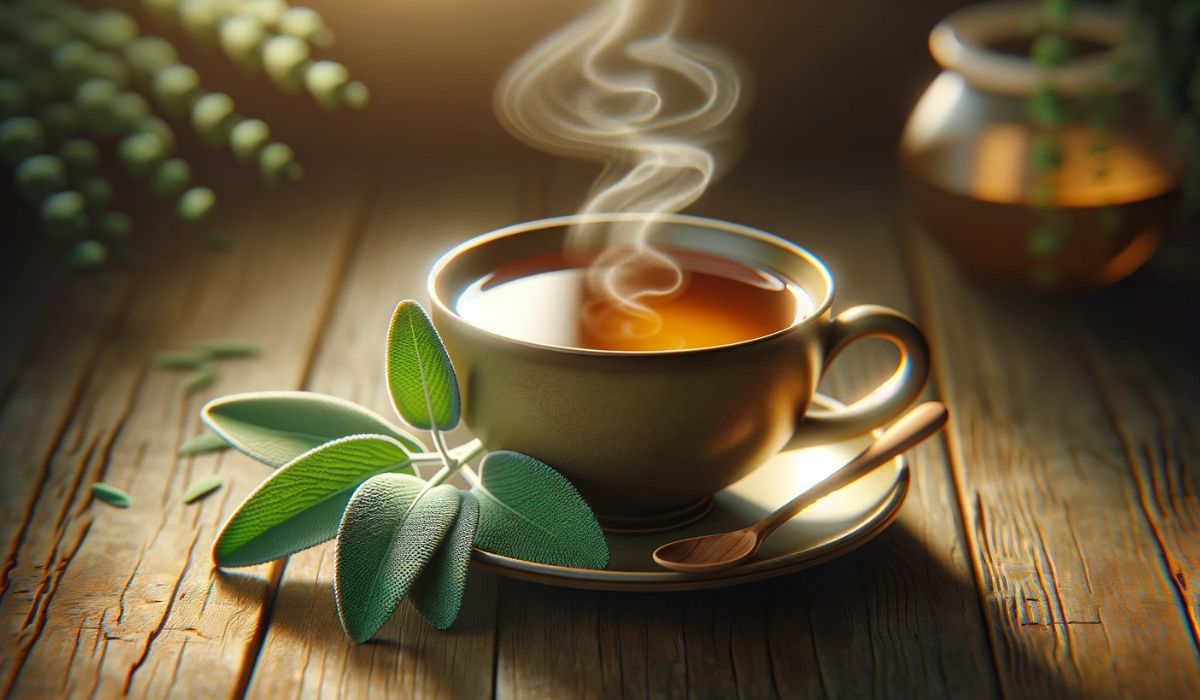
10. Sage Tea: The Underestimated Brain Booster
Introduction to Sage Tea
Sage tea, often overshadowed by more popular teas, is a hidden gem in the world of cognitive enhancers. Originating from the Mediterranean region, this herbal tea has been used in traditional medicine for centuries. Let's explore why it's a great choice for boosting brain function.
Key Benefits:
- Enhances Cognitive Function: Sage tea is rich in essential compounds like rosmarinic acid and carnosic acid, which are key to its cognitive-enhancing properties. Rosmarinic acid is known for its ability to improve memory retention and cognitive performance. Carnosic acid, on the other hand, has been studied for its neuroprotective effects, helping in the maintenance and improvement of brain function.
- Reduces Mental Fatigue: A cup of sage tea is more than just a soothing beverage; it's a mental clarity enhancer. The presence of compounds such as cineole and camphor contributes to reducing mental fatigue. These substances have stimulating effects on the brain, helping to clear brain fog and enhance concentration, making it easier to stay focused and mentally sharp throughout the day.
- Natural Anti-Inflammatory Properties: Sage tea's ability to combat oxidative stress in the brain is largely due to its anti-inflammatory compounds, including flavonoids and phenolic acids. These natural antioxidants play a crucial role in protecting the brain from oxidative damage and inflammation, which are often linked to cognitive decline. By reducing oxidative stress, sage tea supports overall cognitive health and resilience.
Sage Tea and Brain Health
- Boosts Mental Alertness: Regular consumption of sage tea can lead to improved mental alertness and reaction time.
- Supports Brain Health: The natural ingredients in sage tea, including rosmarinic acid, contribute to overall brain health and cognitive function.
- Aids in Attention Span: Its calming effect can enhance attention span, making it easier to focus on tasks at hand.
Why Sage Tea is a Great Option
- Caffeine-Free Tea: Being caffeine-free, it's a great alternative for those who are sensitive to caffeine but still want a mental boost.
- Rich in Antioxidants: Sage tea is high in antioxidants like epigallocatechin gallate, which combat free radicals and support the immune system.
- Versatile in Use: It can be enjoyed as a hot water infusion or as part of various tea blends, making it a flexible addition to your daily routine.

9. Yerba Mate Tea: The Energizing Herbal Brew
Introduction to Yerba Mate Tea
Yerba Mate, a traditional South American brew, is renowned for its unique balance of caffeine and nutrients. This tea is not just a beverage but a cultural symbol, often associated with energy and mental clarity.
Key Benefits:
- Natural Energy Boost: Yerba Mate stands out as a natural energizer, distinct from traditional energy drinks. Its caffeine content, comparable to that of coffee, offers a robust energy boost, but with a more balanced profile that reduces the risk of jitters or caffeine crashes. Studies have shown that the caffeine in Yerba Mate can enhance alertness and energy levels, making it an ideal beverage for those seeking a natural, sustained boost in their daily activities.
- Rich in Antioxidants and Nutrients: Yerba Mate is a nutritional powerhouse, abundant in natural compounds like polyphenols and saponins. Polyphenols are antioxidants that play a significant role in reducing oxidative stress and combating cellular damage. Saponins, on the other hand, have anti-inflammatory properties. These compounds work together to support overall health, including reducing the risk of chronic diseases and improving immune function, as evidenced by various scientific studies.
- Enhances Mental Functions: Regular consumption of Yerba Mate has been linked to improved cognitive functions. The synergistic effect of its caffeine, theobromine, and theophylline content is known to enhance mental focus, attention span, and reaction time. Research indicates that these compounds can improve short-term brain power, making Yerba Mate a beneficial drink for tasks requiring extended periods of concentration and mental effort.
Yerba Mate and Cognitive Performance
- Improves Focus: The caffeine content in Yerba Mate provides a more balanced energy boost compared to a cup of coffee, reducing the likelihood of caffeine crashes.
- Supports Brain Health: The presence of compounds like theobromine and theophylline alongside caffeine contributes to enhanced brain function.
- Aids in Mental Alertness: Its stimulating effects are known to keep the mind alert and focused, making it a popular choice for mental tasks.
Why Yerba Mate is a Good Choice
- Versatile Consumption: Yerba Mate can be enjoyed hot or as an iced tea, fitting seamlessly into any daily routine.
- Balanced Caffeine Content: With less caffeine than coffee but more than most teas, it offers a perfect balance for a sustained energy boost.
- Cultural Significance: Embracing Yerba Mate is not just about enjoying a cup of tea; it's about experiencing a piece of South American tradition.

8. Ginseng Tea: The Ancient Brain Tonic
Introduction to Ginseng Tea
Ginseng tea, rooted in Traditional Chinese Medicine and Ayurvedic medicine, has been a cornerstone for boosting mental acuity and physical vitality for centuries. This herbal tea is derived from the ginseng root, known for its unique, slightly bitter taste and numerous health benefits.
Key Benefits:
- Boosts Cognitive Function: Ginseng has a well-documented history of enhancing cognitive performance and brain function. Several studies have shown that ginsenosides, the active compounds in ginseng, can improve mental performance, memory, and cognitive processing speeds. This makes ginseng tea an excellent choice for starting your day with a mental edge. Its adaptogenic properties also help in managing stress, further contributing to improved cognitive function.
- Reduces Mental Fatigue: Ginseng tea is effective in combating mental fatigue, a claim supported by research findings. Its ability to increase energy levels is attributed to its polysaccharides and oligopeptides, which are known to lower oxidative stress and increase energy production in cells. This makes ginseng tea a beneficial drink for maintaining high energy levels and combating fatigue throughout the day, especially for individuals engaged in mentally demanding tasks.
- Supports Nerve Growth Factor: Ginseng tea's influence on the nerve growth factor (NGF) is another key aspect of its brain health benefits. NGF is essential for the growth, maintenance, and survival of nerve cells, including brain neurons. Ginsenosides in ginseng have been shown to stimulate NGF production, which can lead to enhanced brain health and functioning. This property of ginseng makes it not just a cognitive enhancer but also a potential contributor to long-term neural health.
Ginseng Tea and Mental Clarity
- Enhances Reaction Time: Regular consumption can lead to quicker reaction times and improved mental agility.
- Improves Mental Focus: Ginseng's natural compounds aid in sharpening mental focus and concentration.
- Alleviates Stress: Its adaptogenic properties help in reducing stress and anxiety, contributing to better mental health.
Why Ginseng Tea is a Great Alternative
- Natural Ingredients: Ginseng tea is made from natural, high-quality ingredients, ensuring a healthier experience.
- Less Caffeine: For those looking to reduce their caffeine intake, ginseng tea is a great alternative with its lower caffeine content.
- Historical Relevance: Embracing ginseng tea is not just about its health benefits but also about connecting with a rich, ancient wellness tradition.

7. Oolong Tea: The Balanced Brain Enhancer
Introduction to Oolong Tea
Oolong tea, a traditional Chinese tea, strikes a perfect balance between black and green tea. This partially fermented tea is known for its unique flavor and a host of health benefits, particularly in enhancing cognitive function and mental alertness.
Key Benefits:
- Improves Mental Functions: Oolong tea has been recognized for its effectiveness in enhancing brain function and mental performance. Studies have indicated that the natural compounds in Oolong tea, particularly caffeine and amino acid L-theanine, work together to improve cognitive functions and alertness. L-theanine is known for its ability to cross the blood-brain barrier, enhancing neurotransmitter activity and thereby improving memory, attention, and problem-solving skills.
- Balances Energy Levels: Oolong tea provides a balanced energy boost, attributed to its caffeine content, which is typically lower than that of coffee but higher than that of green tea. This moderate caffeine level offers a steady increase in energy and alertness without the intense jitters or crashes often associated with high-caffeine beverages. The presence of L-theanine also helps in moderating the effects of caffeine, leading to a more sustained and even energy release, making Oolong tea an ideal beverage for maintaining focus and productivity throughout the day.
- Rich in Antioxidants: Oolong tea is abundant in antioxidants, particularly theaflavins, which are formed during the tea's partial oxidation process. These antioxidants play a crucial role in combating oxidative stress in the body, including the brain. Oxidative stress is linked to various cognitive impairments and neurodegenerative diseases. Regular consumption of Oolong tea, with its rich antioxidant content, can therefore contribute to the maintenance of brain health and the prevention of cognitive decline.
Oolong Tea and Cognitive Performance
- Enhances Attention Span: Regular consumption of Oolong tea can improve attention span and focus, essential for cognitive tasks.
- Boosts Mental Alertness: The moderate amount of caffeine in Oolong tea helps to maintain mental alertness, making it a great choice for a midday pick-me-up.
- Supports Brain Health: Its unique compounds contribute to overall brain health and may help in preventing cognitive diseases.
Why Oolong Tea is a Good Choice
- Versatility in Flavors: Oolong tea comes in a variety of flavors, catering to a wide range of palates.
- Less Caffeine than Black Tea: It's a great alternative for those who want less caffeine than black tea but more than green tea.
- Aids in Weight Loss: Besides cognitive benefits, Oolong tea is also known for aiding in weight loss, adding to its health benefits.

6. Rosemary Tea: The Aromatic Brain Stimulant
Introduction to Rosemary Tea
Rosemary tea, derived from the fragrant herb rosemary, is not just for culinary use. This herbal tea is gaining popularity for its potential to enhance memory and concentration, making it a valuable addition to any tea lover's collection.
Key Benefits:
- Boosts Cognitive Function: Rosemary tea is celebrated for its notable impact on cognitive functions, particularly memory and brain performance. Scientific studies have identified that compounds like rosmarinic acid and carnosic acid, present in rosemary, have neuroprotective properties. These compounds have been shown to enhance memory retention and cognitive processing, making rosemary tea a valuable drink for those looking to boost their mental capabilities.
- Reduces Mental Fatigue: The invigorating aroma of rosemary tea is not just pleasing to the senses but also beneficial in reducing mental fatigue. Research suggests that the scent of rosemary can increase alertness and improve mood. Additionally, the active components in rosemary have been found to have stimulatory effects on the brain, helping to clear mental fog and combat fatigue, thereby aiding in maintaining mental clarity and focus throughout the day.
- Natural Antioxidant Source: Rosemary tea is a rich source of natural antioxidants, which are crucial in fighting oxidative stress – a factor implicated in cognitive decline and various neurodegenerative diseases. The antioxidants in rosemary, particularly rosmarinic acid, are effective in neutralizing harmful free radicals, thereby supporting overall brain health. Regular consumption of rosemary tea can contribute to the protection and enhancement of brain function, thanks to its potent antioxidant profile.
Rosemary Tea and Mental Clarity
- Enhances Mental Alertness: The natural compounds in rosemary, such as rosmarinic acid, are effective in keeping the mind sharp and alert.
- Improves Focus: Regular consumption can lead to better focus and concentration, essential for productivity.
- Calming Effect: Despite its stimulating properties, rosemary tea also has a calming effect, reducing stress and anxiety.
Why Rosemary Tea is a Great Option
- Caffeine-Free: It's an excellent choice for those looking for a caffeine-free option to boost brain function.
- Aromatic Experience: The distinct aroma of rosemary tea offers a sensory experience that enhances its cognitive benefits.
- Versatile Use: Rosemary tea can be enjoyed on its own or blended with other herbs for a unique flavor profile.

5. Pu-erh Tea: The Fermented Focus Enhancer
Introduction to Pu-erh Tea
Pu-erh tea, a type of fermented tea from China's Yunnan province, is renowned for its deep, earthy flavor and numerous health benefits. This unique tea undergoes a fermentation process that not only enhances its taste but also its health properties, particularly in boosting mental alertness and cognitive function.
Key Benefits:
- Improves Brain Function: Pu-erh tea has gained recognition for its ability to enhance cognitive abilities and overall brain function. This is attributed to the presence of caffeine and theanine, which, when combined, have been shown to improve brain function. Studies suggest that these compounds can enhance mental alertness and sharpen focus, making Pu-erh tea an excellent choice for tasks that require mental acuity. Additionally, Pu-erh tea contains GABA (gamma-aminobutyric acid), a neurotransmitter known for its role in improving mood and cognitive functions.
- Regulates Blood Pressure: One of the notable health benefits of Pu-erh tea is its ability to help regulate blood pressure. The bioactive compounds in Pu-erh tea, such as theaflavins and thearubigins, which develop during the fermentation process, have been linked to cardiovascular health. Regular consumption of Pu-erh tea has been associated with maintaining healthy blood pressure levels, as evidenced by several studies. This is crucial for brain health, as stable blood pressure supports optimal blood flow to the brain, essential for cognitive functions.
- Rich in Antioxidants: The unique fermentation process of Pu-erh tea not only imparts a distinct flavor but also enhances its antioxidant profile. This process increases the levels of antioxidants like catechins and theaflavins, which are known for their ability to combat oxidative stress in the body. Oxidative stress is a key factor in aging and cognitive decline, and the antioxidants in Pu-erh tea help neutralize free radicals, thereby aiding in the preservation of brain health and cognitive functions.
Pu-erh Tea and Cognitive Performance
- Boosts Energy Levels: The moderate caffeine content in Pu-erh tea provides a sustained energy boost without the crashes associated with high-caffeine drinks.
- Enhances Mental Clarity: Regular consumption can lead to improved mental clarity and focus, essential for productivity and learning.
- Supports Weight Loss: In addition to cognitive benefits, Pu-erh tea is also known for its ability to aid in weight loss, contributing to overall health.
Why Pu-erh Tea is a Great Alternative
- Unique Flavor Profile: Its distinct, earthy flavor makes it a great option for those looking for a tea that stands out from the usual options.
- Higher Quality Experience: Pu-erh tea is often regarded as a higher quality tea, offering a more sophisticated tea-drinking experience.
- Natural Way to Boost Brain Health: The natural compounds in Pu-erh tea make it a healthy, natural way to enhance brain function.

4. Earl Grey: The Aromatic Brain Booster
Introduction to Earl Grey Tea
Earl Grey, a distinguished blend known for its unique combination of black tea and bergamot oil, offers more than just a delightful taste. This tea is celebrated for its ability to enhance cognitive function, improve focus, and provide a sustained energy boost, making it a popular choice for those seeking mental clarity.
Key Benefits:
- Enhances Focus and Concentration: Earl Grey tea, known for its distinctive flavor, owes much of its cognitive benefits to its caffeine content. Caffeine is a well-known stimulant that has been scientifically proven to enhance mental focus and concentration. The caffeine in Earl Grey tea is in a moderate amount, making it effective for cognitive tasks without the overstimulation that can occur with high caffeine content beverages. This makes Earl Grey an excellent choice for those seeking a mental boost to aid in tasks requiring sustained attention and focus.
- Boosts Energy Levels: The balanced energy boost provided by Earl Grey tea is one of its key benefits, especially for those looking to avoid the highs and lows associated with coffee consumption. The combination of caffeine and the calming effects of bergamot oil in Earl Grey offers a smoother, more sustained energy lift. This synergy helps in maintaining energy levels over a longer period, reducing the likelihood of experiencing the abrupt energy crashes often associated with high-caffeine drinks.
- Promotes Mental Alertness: The unique addition of bergamot oil in Earl Grey tea not only imparts a refreshing flavor but also contributes to mental alertness. Bergamot oil contains compounds that have been found to have a stimulating effect on the brain. The aroma of bergamot has been associated with increased alertness and reduced stress, as supported by aromatherapy research. This makes Earl Grey tea an excellent beverage for keeping the mind sharp and alert, particularly during long work hours or intensive study sessions.
Earl Grey and Cognitive Performance
- Improves Mental Functions: Regular consumption of Earl Grey can lead to enhanced mental functions and reaction times.
- Reduces Stress: The calming effect of bergamot oil helps in reducing stress and anxiety, contributing to a clearer and more focused mind.
- Supports Brain Health: The antioxidants in Earl Grey, particularly those derived from the bergamot oil, play a role in promoting overall brain health.
Why Earl Grey is a Great Choice
- Unique Flavor Profile: The distinctive flavor of Earl Grey makes it a favorite among tea enthusiasts.
- Natural Ingredients: Made with natural ingredients, Earl Grey is a healthy choice for a daily tea routine.
- Versatile Brewing Options: Earl Grey can be enjoyed hot or as an iced tea, fitting seamlessly into any lifestyle.

3. White Tea: The Gentle Brain Stimulator
Introduction to White Tea
White tea, known for its delicate flavor and minimal processing, is a true gem in the tea world. Originating from the Camellia sinensis tea plant, the same as green and black tea, white tea stands out for its lower caffeine content and high antioxidant levels, making it an excellent choice for enhancing cognitive function and mental alertness.
Key Benefits:
- Supports Cognitive Health: White tea is esteemed for its high concentration of catechins, a type of antioxidant that plays a significant role in brain health. Research has shown that catechins can cross the blood-brain barrier, offering protective effects against neurodegenerative diseases and enhancing cognitive functions. These antioxidants are known to combat neuroinflammation and promote neurogenesis, both of which are vital for maintaining cognitive health and preventing age-related cognitive decline.
- Gentle on the System: One of the appealing aspects of white tea is its lower caffeine content compared to green or black tea, making it an ideal choice for those with caffeine sensitivity. Despite its lower caffeine levels, white tea still provides a gentle and sustained energy boost. This is particularly beneficial for maintaining alertness without the overstimulation or subsequent energy crashes often associated with higher-caffeine beverages. It's a perfect option for those seeking a mild stimulant that can be enjoyed throughout the day.
- Rich in Antioxidants: White tea is renowned for its high antioxidant content, particularly polyphenols, which are effective in combating oxidative stress and neutralizing free radicals. Oxidative stress is a key factor in aging and cognitive decline, and the antioxidants in white tea help mitigate these effects. Regular consumption of white tea can therefore contribute to the preservation of brain health and cognitive functions, as supported by various studies highlighting the role of antioxidants in neuroprotection.
White Tea and Mental Clarity
- Enhances Mental Alertness: The subtle amount of caffeine in white tea is enough to keep you alert without causing jitters or crashes.
- Promotes Relaxation: Its calming properties aid in reducing stress and anxiety, contributing to a clearer mind and improved focus.
- Boosts Brain Function: Regular consumption of white tea can lead to improved brain function and a reduced risk of cognitive disorders.
Why White Tea is a Great Option
- Subtle Flavor: Its light and delicate flavor makes it a great choice for those who prefer a less intense tea experience.
- Natural Way to Enhance Focus: The natural compounds in white tea offer a healthy, non-aggressive way to boost mental performance.
- Versatile Brewing Options: White tea can be enjoyed hot or cold, making it a flexible addition to your daily routine.

2. Green Tea: The Classic Brain Enhancer
Introduction to Green Tea
Green tea, one of the most popular teas worldwide, is celebrated not only for its refreshing taste but also for its numerous health benefits. Rich in antioxidants and with a moderate caffeine level, green tea is an excellent choice for enhancing mental alertness and cognitive performance.
Key Benefits:
- Improves Brain Function: Green tea's positive impact on brain function is largely attributed to the synergistic effects of caffeine and L-theanine, a unique amino acid found in tea leaves. Studies have shown that L-theanine can increase alpha wave activity in the brain, leading to relaxation without drowsiness. When combined with caffeine, L-theanine enhances cognitive functions such as improved attention span and problem-solving skills. This combination has been found to improve both speed and accuracy of performance in attention-switching tasks and reduce susceptibility to distractions.
- Reduces Mental Fatigue: Green tea is effective in combating mental fatigue, a benefit that can be attributed to its caffeine content. Caffeine is a known stimulant that increases alertness and reduces the feeling of tiredness. However, unlike coffee, the caffeine in green tea is released more slowly, thanks to the presence of L-theanine, which moderates the absorption of caffeine. This results in a more stable and prolonged energy boost, allowing for sustained high energy levels and concentration throughout the day without the abrupt crashes often associated with coffee.
- Supports Overall Brain Health: The rich polyphenol content in green tea, especially epigallocatechin gallate (EGCG), is beneficial for brain health. These polyphenols have antioxidant and anti-inflammatory properties that play a crucial role in protecting the brain. Research suggests that EGCG can help in preventing neurodegenerative diseases such as Alzheimer's and Parkinson's by reducing oxidative stress and improving the efficiency of brain cell signaling. Regular consumption of green tea may thus contribute to the maintenance of healthy brain function and the prevention of cognitive decline.
Green Tea and Cognitive Performance
- Boosts Mental Alertness: The caffeine content in green tea provides a balanced energy boost, keeping the mind alert and focused.
- Enhances Memory: Regular consumption of green tea has been linked to improved memory and cognitive functions.
- Reduces Stress: The L-theanine in green tea has calming effects, helping to reduce stress and anxiety while maintaining mental clarity.
Why Green Tea is a Perfect Tea
- Widely Available: Green tea is easily accessible and comes in various forms, including tea bags and loose leaf teas.
- Balanced Caffeine Content: It offers a great balance of caffeine, making it a great alternative to coffee.
- Promotes Physical Health: Beyond cognitive benefits, green tea is also known for its positive effects on weight loss and cardiovascular health.

1. Matcha Tea: The Ultimate Brain Enhancer
Introduction to Matcha Tea
Matcha, a revered type of green tea from Japan, stands at the zenith of teas for enhancing cognitive function. This vibrant green powder is not only a staple in traditional Japanese tea ceremonies but also a powerhouse of health benefits, especially for boosting brain power and mental clarity.
Key Benefits:
- Superior Cognitive Enhancement: Matcha tea stands out for its exceptional ability to enhance cognitive performance, a benefit largely due to its high concentrations of L-theanine and caffeine. L-theanine, an amino acid unique to tea, is known for its ability to induce a state of calm alertness and increase alpha-wave activity in the brain. This results in improved mental clarity and focus. Additionally, the caffeine in matcha is released steadily over time, unlike the quick spike provided by coffee. Studies have shown that the combination of L-theanine and caffeine in matcha can improve cognitive functions, including faster reaction times, increased attention, and enhanced memory.
- Rich in Antioxidants: Matcha is renowned for its high levels of antioxidants, particularly epigallocatechin gallate (EGCG). EGCG is one of the most powerful catechins, known for its antioxidant properties that help neutralize harmful free radicals. Oxidative stress, caused by free radicals, is a significant contributor to brain aging and cognitive diseases. The antioxidants in matcha play a crucial role in combating this oxidative stress, thereby promoting brain health and potentially reducing the risk of neurodegenerative diseases.
- Sustained Energy Boost: Matcha provides a unique and sustained energy boost, distinguishing it from the short-lived buzz often associated with coffee. This is due to the combination of its natural caffeine content and L-theanine, which together offer a more balanced and prolonged release of energy. This synergy prevents the rapid spike and crash in energy levels typically caused by coffee and other high-caffeine beverages. As a result, matcha is an excellent choice for those seeking a stable and extended boost in focus and alertness throughout the day.
Matcha Tea and Brain Function
- Enhances Mental Clarity and Focus: The unique combination of caffeine and L-theanine in matcha leads to improved concentration and a heightened state of alertness, making it perfect for tasks requiring sustained mental effort.
- Supports Overall Brain Health: Regular consumption of matcha can contribute to long-term brain health and may help in preventing age-related cognitive decline.
- Reduces Stress and Anxiety: L-theanine in matcha has calming effects, helping to reduce stress and anxiety while maintaining mental sharpness.
Why Matcha Tea is the Best Choice
- Premium Quality Experience: Matcha is considered a high-grade tea, offering a unique and sophisticated experience that goes beyond the average cup of tea.
- Versatility in Use: It can be enjoyed in traditional forms or incorporated into modern recipes like smoothies, lattes, and even baked goods.
- Holistic Health Benefits: Beyond cognitive benefits, matcha is also known for its positive impact on overall physical health, including supporting the immune system and aiding in weight loss.
Incorporating Matcha into Your Daily Routine
- As a Morning Ritual: Start your day with a cup of matcha to awaken your mind and prepare for the day's challenges.
- Pre-Workout Drink: Use matcha as a natural pre-workout drink to boost your energy levels and focus during exercise.
- Afternoon Pick-Me-Up: Replace your afternoon coffee with matcha to avoid the caffeine crash and maintain productivity throughout the day.
Matcha Tea, with its exceptional qualities, rightfully claims the top spot in our list of the 10 Best Teas for Focus. Each tea discussed offers unique benefits for enhancing cognitive function and mental clarity, making them great additions to your daily routine.
This comprehensive guide covers the spectrum of teas beneficial for brain health, ensuring that there's a choice for everyone, whether you prefer the subtle nuances of white tea or the robust energy of matcha. Enjoy exploring these teas and experiencing the positive changes they can bring to your cognitive well-being.

Citations:
Anas Sohail A, Ortiz F, Varghese T, Fabara SP, Batth AS, Sandesara DP, Sabir A, Khurana M, Datta S, Patel UK. The Cognitive-Enhancing Outcomes of Caffeine and L-theanine: A Systematic Review. Cureus. 2021 Dec 30;13(12):e20828. doi: 10.7759/cureus.20828. PMID: 35111479; PMCID: PMC8794723.
Baba Y, Inagaki S, Nakagawa S, Kaneko T, Kobayashi M, Takihara T. Effects of l-Theanine on Cognitive Function in Middle-Aged and Older Subjects: A Randomized Placebo-Controlled Study. J Med Food. 2021 Apr;24(4):333-341. doi: 10.1089/jmf.2020.4803. Epub 2021 Mar 22. PMID: 33751906; PMCID: PMC8080935.
Mancini E, Beglinger C, Drewe J, Zanchi D, Lang UE, Borgwardt S. Green tea effects on cognition, mood and human brain function: A systematic review. Phytomedicine. 2017 Oct 15;34:26-37. doi: 10.1016/j.phymed.2017.07.008. Epub 2017 Jul 27. PMID: 28899506.
Nobre AC, Rao A, Owen GN. L-theanine, a natural constituent in tea, and its effect on mental state. Asia Pac J Clin Nutr. 2008;17 Suppl 1:167-8. PMID: 18296328.
Kimura K, Ozeki M, Juneja LR, Ohira H. L-Theanine reduces psychological and physiological stress responses. Biol Psychol. 2007 Jan;74(1):39-45. doi: 10.1016/j.biopsycho.2006.06.006. Epub 2006 Aug 22. PMID: 16930802.
Kuriyama S, Hozawa A, Ohmori K, Shimazu T, Matsui T, Ebihara S, Awata S, Nagatomi R, Arai H, Tsuji I. Green tea consumption and cognitive function: a cross-sectional study from the Tsurugaya Project 1. Am J Clin Nutr. 2006 Feb;83(2):355-61. doi: 10.1093/ajcn/83.2.355. PMID: 16469995.
Zhang R, Zhang L, Li Z, Zhang P, Song H, Yao DA, Cao J, Zhang JJ. Green tea improves cognitive function through reducing AD-pathology and improving anti-oxidative stress capacity in Chinese middle-aged and elderly people. Front Aging Neurosci. 2022 Aug 5;14:919766. doi: 10.3389/fnagi.2022.919766. PMID: 35992609; PMCID: PMC9389233.
Afzal O, Dalhat MH, Altamimi ASA, Rasool R, Alzarea SI, Almalki WH, Murtaza BN, Iftikhar S, Nadeem S, Nadeem MS, Kazmi I. Green Tea Catechins Attenuate Neurodegenerative Diseases and Cognitive Deficits. Molecules. 2022 Nov 6;27(21):7604. doi: 10.3390/molecules27217604. PMID: 36364431; PMCID: PMC9655201.
Khan N, Mukhtar H. Tea Polyphenols in Promotion of Human Health. Nutrients. 2018 Dec 25;11(1):39. doi: 10.3390/nu11010039. PMID: 30585192; PMCID: PMC6356332.
Ng KW, Cao ZJ, Chen HB, Zhao ZZ, Zhu L, Yi T. Oolong tea: A critical review of processing methods, chemical composition, health effects, and risk. Crit Rev Food Sci Nutr. 2018;58(17):2957-2980. doi: 10.1080/10408398.2017.1347556. Epub 2017 Aug 24. PMID: 28678527.
Sá CM, Ramos AA, Azevedo MF, Lima CF, Fernandes-Ferreira M, Pereira-Wilson C. Sage tea drinking improves lipid profile and antioxidant defences in humans. Int J Mol Sci. 2009 Sep 9;10(9):3937-3950. doi: 10.3390/ijms10093937. PMID: 19865527; PMCID: PMC2769154.
Lutomski P, Goździewska M, Florek-Łuszczki M. Health properties of Yerba Mate. Ann Agric Environ Med. 2020 Jun 19;27(2):310-313. doi: 10.26444/aaem/119994. Epub 2020 Apr 3. PMID: 32588612.
Arring NM, Millstine D, Marks LA, Nail LM. Ginseng as a Treatment for Fatigue: A Systematic Review. J Altern Complement Med. 2018 Jul;24(7):624-633. doi: 10.1089/acm.2017.0361. Epub 2018 Apr 6. PMID: 29624410.
Achour M, Ben Salem I, Ferdousi F, Nouira M, Ben Fredj M, Mtiraoui A, Isoda H, Saguem S. Rosemary Tea Consumption Alters Peripheral Anxiety and Depression Biomarkers: A Pilot Study in Limited Healthy Volunteers. J Am Nutr Assoc. 2022 Mar-Apr;41(3):240-249. doi: 10.1080/07315724.2021.1873871. Epub 2021 Feb 10. PMID: 33565922.
Wang S, Qiu Y, Gan RY, Zhu F. Chemical constituents and biological properties of Pu-erh tea. Food Res Int. 2022 Apr;154:110899. doi: 10.1016/j.foodres.2021.110899. Epub 2021 Dec 15. PMID: 35337597.
Yang CY, Hung KC, Yen YY, Liao HE, Lan SJ, Lin HC. Anti-Oxidative Effect of Pu-erh Tea in Animals Trails: A Systematic Review and Meta-Analysis. Foods. 2022 May 4;11(9):1333. doi: 10.3390/foods11091333. PMID: 35564056; PMCID: PMC9100797.
Scuteri D, Rombolà L, Morrone LA, Bagetta G, Sakurada S, Sakurada T, Tonin P, Corasaniti MT. Neuropharmacology of the Neuropsychiatric Symptoms of Dementia and Role of Pain: Essential Oil of Bergamot as a Novel Therapeutic Approach. Int J Mol Sci. 2019 Jul 6;20(13):3327. doi: 10.3390/ijms20133327. PMID: 31284573; PMCID: PMC6651821.
Matcha Tea Bags vs Powder: What's the Difference?
Dive into the vibrant and healthful universe of matcha with our detailed exploration of matcha tea bags versus powder. Uncover the rich history, myriad health benefits, and the unique preparation...

Matcha, a special type of green tea, has become a favorite of many tea lovers today, captivating enthusiasts with its vibrant green color and earthy flavor. Originating from the fine Japanese green tea leaves of the Camellia sinensis plant, matcha stands out in its preparation and consumption.
This article delves deep into the world of matcha, exploring the differences between matcha tea bags and the powder form, their health benefits, and why they have become a staple in the realm of tea.
Understanding Matcha: A Comprehensive Overview
Matcha is a type of powdered green tea, known for its bright green color and rich antioxidant properties. Although matcha and green tea come from the same Camellia Sinensis tea plant, they are grown and processed differently.
Matcha tea leaves are shaded from sunlight three to four weeks before harvest. Unlike regular green tea, matcha also involves the grinding of the entire tea leaf into a fine powder. This process ensures that matcha retains a higher concentration of nutrients compared to green tea bags, which typically contain only parts of the tea leaf.
Health Benefits of Matcha
Matcha is celebrated for its numerous health benefits. It is rich in antioxidants, particularly epigallocatechin gallate (EGCG), known for its anti-inflammatory properties and ability to combat free radicals. Regular consumption of matcha has been linked to improved heart health, lower blood sugar levels, and a reduced risk of heart disease. Additionally, its high vitamin C and amino acid content can further strengthens the immune system and overall health.

Weight Loss and Matcha
Both matcha tea bags and matcha powder are believed to aid in weight loss. The presence of catechins and caffeine in matcha can boost metabolism, aiding in fat burning. The entire leaf used in matcha powder might offer a slight edge in this regard due to its concentrated form.
Matcha and Caffeine Content
Given its unique preparation, matcha contains much caffeine, offering a more substantial and sustained energy boost compared to traditional teas. Matcha also contains l-theanine, an amino acid that is responsible for the 'umami' fragrance and flavor found in high-quality matcha powder.
When combined with the caffeine in matcha, this unique amino acid provides a sustained energy release without the anxiety commonly experienced after coffee. It has also been found to increase memory, alertness, and concentration, and improve mood; making it a popular choice for those seeking a natural and effective way to enhance their performance.

Matcha Powder: The True Matcha Experience
Matcha powder offers the most authentic matcha experience. It is made by stone-grinding whole tea leaves into a fine powder, ensuring you consume the entire leaf. This method preserves all the nutrients, antioxidants, and amino acids, providing a potent health boost.
Preparation Methods
Preparing matcha the traditional way involves a special bamboo whisk called a chasen, a matcha bowl called a chawan, a bamboo scoop called a chashaku, and hot water. The water temperature is crucial; if it is too hot, it can destroy the delicate compounds in the matcha. The optimal temperature is 75 to 80 degrees Celsius, and only 70 mL of hot water is required.
After combining the matcha tea powder and hot water, it is whisked to make a delicious matcha drink. In a traditional Japanese tea ceremony, the host will offer their guests a Japanese sweet known as a wagashi before they drink their matcha. The guests can then admire their tea bowl before finishing their matcha in two to three sips.
A traditional Japanese tea ceremony has many variations depending on the host's style. The ceremony will also involve different utensils, tea bowls, and decorations in the tea room depending on the season in which it is being held. Most importantly, the Japanese tea ceremony uses matcha powder, not matcha tea bags, emphasizing the cultural significance and ritualistic aspect of this beverage.

Matcha Latte and Other Variations
Matcha powder is versatile. A popular choice is the matcha latte, often made with dairy or coconut milk, which offers a creamy, indulgent experience. In recent years, plant-based milks are also popular choices for matcha lattes. The powder form also allows for incorporation into various matcha products like smoothies, ice cream, and baked goods.
Quality and Price
The quality of matcha powder can vary. High-quality, organic matcha tends to have a vibrant green color and a more refined taste. This quality often comes at a higher price, but for many, the health benefits and flavor profile justify the cost.
Matcha Tea Bags: Convenience and Accessibility
Matcha tea bags offer a more convenient and accessible way to enjoy matcha. These bags typically contain a blend of green tea and matcha, providing a different flavor profile.
Benefits of Green Tea Bags
While not as potent as the actual matcha powder, matcha tea bags still offer many benefits of green tea. They are rich in antioxidants, though in lesser amounts, and can still contribute positively to heart health and weight loss efforts.
Ease of Preparation
One of the significant advantages of matcha tea bags is their ease of use. Simply steeping the bag in hot water makes for a quick and hassle-free cup of tea, ideal for those on the go.
Different Qualities and Flavors
Matcha tea bags come in different qualities and flavors. Some may contain pure matcha, while others might blend in other types of green tea. Although matcha tea bag blends contain matcha, pure matcha bags are the best choice. Alas, matcha tea bags blended with different types of tea allow for the exploration of different flavors and experiences.

Main Differences Between Matcha Powder and Tea Bags
The real difference between matcha powder and tea bags is their composition and preparation. Matcha powder uses the entire leaf, offering a more potent health benefit and a true matcha experience with its unique, earthy flavor. In contrast, matcha tea bags are more about convenience and accessibility, with a slightly different flavor due to the blending of teas.
Antioxidant Levels and Health Impact
The antioxidant levels in matcha powder are significantly higher due to the use of the whole leaf. This means more EGCG and other beneficial compounds, contributing to better heart health, anti-inflammatory effects, and potentially more effective weight loss.
Price and Accessibility
Matcha green tea powder, especially of good quality, tends to be more expensive than matcha tea bags. However, for those seeking the authentic matcha experience and maximum health benefits, the powder form is often considered the best choice.

Expanding the Matcha Experience
Loose Leaf Tea and Matcha
Loose-leaf tea, including loose-leaf matcha (known as tencha), offers a different experience compared to powdered forms. Because loose-leaf matcha is not ground into a fine powder, it is less concentrated than matcha.
Like regular loose-leaf tea, tencha can be steeped in hot water and then the leaves are discarded. It still offers a plethora of health benefits and a rich flavor and is a great way for beginners to experience matcha for the first time.
Electric Milk Frothers and Matcha Drinks
For those who enjoy a matcha latte, electric milk frothers can add a new dimension to the preparation, creating a smooth, frothy texture that enhances the taste. A cup of matcha prepared this way becomes a luxurious treat, tantalizing the taste buds.
Matcha Sellers and Quality
When purchasing matcha, whether in powder or tea bag form, it's important to choose reputable matcha sellers. The best quality matcha will be a bright green powder and have a fine texture, indicating its purity and high quality.
Renowned for its exceptional quality and exquisite flavor, Japanese matcha powder from Kyoto, particularly the celebrated Uji matcha, stands as the epitome of matcha excellence, embodying the pinnacle of traditional matcha craftsmanship.

Matcha Caffeine and Regular Tea
Compared to regular tea, matcha caffeine content is higher, offering a more robust energy boost. This makes matcha a preferred choice for those needing a more substantial pick-me-up.
The Form of Tea: Powder vs. Bags
The form of tea you choose—whether a fine powder or a convenient tea bag—will depend on your lifestyle and preferences. Each offers a unique way to enjoy this special type of green tea, whether it's a quick cup of matcha on the go or carefully prepared traditional matcha powder in a tea ceremony.

Conclusion: Embracing the Matcha Lifestyle
Deciding between matcha powder and tea bags depends on individual preferences and priorities. If you're seeking the full health benefits, antioxidant properties, and the true matcha experience, then high-quality matcha powder is your best bet.
However, if convenience, ease of preparation, and a milder introduction to matcha are what you're after, then matcha tea bags are an excellent choice.
Whether you choose matcha powder or tea bags, you're embracing a world of health benefits and a rich cultural tradition. Each form offers its unique take on this type of tea, making matcha a versatile and delightful daily addition for tea enthusiasts.
With its growing popularity, matcha continues to be a significant and cherished part of the tea world, celebrated for its taste, health benefits, and cultural significance.
Why Umami Matters - Enhancing the Taste and Benefits of Matcha Green Tea
In this article, we explore the importance of umami in matcha green tea, delving into its history, cultivation techniques, and the role it plays in enhancing taste and health benefits....

Why Umami Matters - Enhancing the Taste and Benefits of Matcha Green Tea
The Discovery of Umami: A Flavorful History
The history of umami dates back to 1908 when Japanese chemist Kikunae Ikeda first identified this elusive fifth taste. Derived from the amino acid glutamate, umami is responsible for the savory flavor found in various foods. While umami is present in many cuisines worldwide, it has a strong connection with traditional Japanese ingredients like soy sauce, miso, and of course, matcha.
The Significance of Umami in Matcha
Umami plays a pivotal role in the taste profile of matcha, adding depth and complexity to its flavor. When matcha is properly cultivated and processed, the umami taste enhances the tea's overall sensory experience, making it more enjoyable and satisfying. In addition, the presence of umami in matcha has a significant impact on its health benefits, making it a crucial component for tea enthusiasts and health-conscious individuals alike.
Unveiling the Umami Connection in Matcha
Matcha, a finely ground green tea powder, owes its umami-rich flavor to the amino acid L-theanine. L-theanine is responsible for the savory, umami taste in matcha, which balances its natural sweetness and astringency. This harmony of flavors makes matcha a versatile and delectable ingredient in various culinary applications.
The Shading Technique: Developing Umami in Matcha
One of the critical factors that influence umami development in matcha is the shading technique employed during cultivation. Tea growers cover the plants with a canopy to limit their exposure to sunlight in the weeks leading up to the harvest. This process increases the chlorophyll content and L-theanine levels, resulting in a vibrant green color and a more pronounced umami flavor.
Quality Matters: Umami Levels in Different Matcha Grades
It's essential to note that not all matcha is created equal when it comes to umami content. Factors such as the tea plant cultivar, growing region, and harvest timing all impact the umami levels in matcha. High-quality, first-harvest matcha from reputable sources like the Uji region in Kyoto, Japan, typically contains higher levels of umami. In contrast, lower-grade matcha, often used for culinary purposes, may have a less pronounced umami flavor.
Umami and Matcha's Health Benefits
Umami and matcha share a fascinating connection that goes beyond taste – they both offer impressive health benefits. Umami-rich foods, such as fermented and aged products, can aid in digestion and enhance nutrient absorption. On the other hand, matcha is packed with antioxidants, particularly catechins like EGCG, which have been linked to cancer prevention, heart health, and weight loss. This dynamic duo's synergy makes them an ideal addition to a health-conscious lifestyle.
Experiencing Umami and Matcha in Everyday Life
To fully appreciate the umami-rich flavor of matcha, it's essential to incorporate it into your daily routine. Here are some ways to enjoy the delightful combination of umami and matcha in your diet:
Incorporating Umami-rich Matcha in Your Diet
Start by replacing your regular morning coffee with a cup of high-quality umami-rich matcha. The energy boost from the tea, combined with its savory taste, will help you start your day on a positive note. You can also add matcha powder to your smoothies, oatmeal, or yogurt for an extra dose of umami flavor and health benefits.
Recipes that Highlight Umami and Matcha
Experiment with umami and matcha in your cooking by incorporating them into various dishes. From savory main courses to delightful desserts, the umami-rich matcha can elevate your culinary creations to new heights.
Matcha Beverages: Umami's Role in Taste Enhancement
The umami in matcha can also enhance the flavor of beverages like lattes and cocktails. A creamy matcha latte with high umami content will deliver a soothing and invigorating taste experience, while umami-rich matcha cocktails offer a unique and memorable flavor profile.
The Art of Savoring Umami in Matcha
To truly appreciate the umami flavor in matcha, take the time to savor each sip. Focus on the taste, aroma, and texture of the tea, allowing your senses to fully experience the umami's depth and complexity. This mindful approach to enjoying matcha will enhance your appreciation for its exquisite taste.
Choosing and Storing Umami-rich Matcha
To ensure you're enjoying the full benefits and taste of umami-rich matcha, it's crucial to select and store your matcha correctly. Opt for high-quality, first-harvest, shade-grown matcha from reputable sources like the Uji region. Store your matcha in an airtight container, away from heat, light, and moisture, to maintain its vibrant color and umami-rich flavor.
The Future of Umami and Matcha: Culinary Innovations and Trends
As the world continues to explore the delightful pairing of umami and matcha, we can expect to see innovative culinary creations and beverage concoctions that showcase their synergy. From fine dining to casual eateries, the umami-matcha connection will captivate the taste buds of food enthusiasts worldwide.
Conclusion
The significance of umami in matcha cannot be overstated. It plays a crucial role in enhancing the taste, aroma, and health benefits of this highly prized green tea. By understanding the history, cultivation techniques, and culinary possibilities of umami and matcha, you can elevate your tea experience to new heights.
FAQs
- What is umami, and why is it important in matcha? Umami is the fifth taste, derived from the amino acid glutamate, and it's responsible for the savory flavor in various foods. In matcha, umami adds depth and complexity to its taste profile, balancing its natural sweetness and astringency. It also enhances the overall sensory experience and contributes to matcha's health benefits.
- How does shading affect the umami content in matcha? Shading is a crucial technique used during matcha cultivation. By covering the tea plants with a canopy to limit their exposure to sunlight, tea growers increase chlorophyll content and L-theanine levels. This results in a vibrant green color and a more pronounced umami flavor.
- Does all matcha have the same level of umami? No, not all matcha contains the same level of umami. Factors such as the tea plant cultivar, growing region, and harvest timing impact the umami levels in matcha. High-quality, first-harvest matcha from reputable sources typically has higher levels of umami compared to lower-grade matcha.
- What are some ways to incorporate umami-rich matcha into my diet? You can incorporate umami-rich matcha into your diet by replacing your morning coffee with a cup of high-quality matcha, adding matcha powder to smoothies, oatmeal, or yogurt, and experimenting with recipes that highlight umami and matcha in savory dishes and desserts.
- How should I store umami-rich matcha to preserve its freshness and flavor? Store your umami-rich matcha in an airtight container, away from heat, light, and moisture. This will help maintain its vibrant color and umami-rich flavor for an extended period.
Discover the fascinating world of umami and matcha by trying high-quality, organic Uji matcha from the first spring harvest.
Subscribe to this blog's RSS feed using http://premium-health-japan.myshopify.com/blogs/news.atom
Exploring Matcha Tea Leaves: From Samidori to Okumidori
Explore the world of matcha tea leaves, from Samidori to Okumidori, and learn about their unique flavors, cultivation, and health benefits.

Exploring Matcha Tea Leaves: From Samidori to Okumidori
Introduction to Matcha Tea Leaves
If you're a tea enthusiast, you've probably heard of matcha, the vibrant green tea powder that has taken the world by storm. But did you know that there are numerous matcha tea leaf varieties, each with its unique characteristics and flavor profiles?
In this article, we'll delve into the world of matcha tea leaves and explore several varieties, from Samidori to Okumidori, and beyond.
Subscribe to this blog's RSS feed using http://premium-health-japan.myshopify.com/blogs/news.atom
Samidori Matcha Tea Leaves
Characteristics
Samidori is a popular matcha tea leaf variety originating from the Uji region of Japan. This variety is known for its bright green color, fine texture, and excellent umami flavor.
Cultivation process
Samidori matcha tea leaves are shade-grown for 20-30 days before being harvested. This process increases the chlorophyll content, contributing to their vivid green color and unique flavor profile. After harvest, the leaves are steamed, dried, and stone-ground into a fine powder.
Flavor profile
Samidori matcha boasts a smooth, rich taste with a balance of umami, sweetness, and a hint of bitterness. It's often considered a top-tier matcha variety due to its exceptional flavor and quality.
Okumidori Matcha Tea Leaves
Characteristics
Okumidori, another matcha tea leaf variety from the Uji region, is known for its intense green color, fine texture, and strong umami flavor. This variety is often used in high-quality ceremonial matcha.
Cultivation process
Like Samidori, Okumidori matcha tea leaves are shade-grown for several weeks before harvest. The extended shading period increases the theanine content, resulting in a more pronounced umami flavor. Once harvested, the leaves undergo the same steaming, drying, and stone-grinding process as Samidori matcha.
Flavor profile
Okumidori matcha features a robust umami taste, accompanied by a slight sweetness and minimal bitterness. Its rich, full-bodied flavor makes it an excellent choice for those who enjoy a more intense matcha experience.
Yabukita Matcha Tea Leaves
Characteristics
Yabukita is a versatile matcha tea leaf variety known for its adaptability and resistance to pests and diseases. It's the most widely cultivated tea variety in Japan, accounting for about 75% of tea production.
Cultivation process
Yabukita matcha tea leaves are also shade-grown before harvest, although the shading period may be shorter than that of Samidori and Okumidori varieties. The leaves are then processed similarly to other matcha varieties, through steaming, drying, and grinding.
Flavor profile
Yabukita matcha offers a balanced flavor with mild umami notes, a pleasant sweetness, and a slight astringency. Its versatility makes it suitable for both ceremonial and everyday use.
Gokou Matcha Tea Leaves
Characteristics
Gokou, another Uji-origin matcha tea leaf variety, is renowned for its exceptional aroma and umami-rich flavor. Its dark green color and fine texture make it a sought-after choice for high-quality matcha.
Cultivation process
Gokou matcha tea leaves are shade-grown for an extended period, which enhances their flavor and aroma. After harvesting, the leaves are steamed, dried, and ground into a fine powder.
Flavor profile
Gokou matcha is characterized by its intense umami flavor, with a velvety texture and a lingering, sweet aftertaste. Its rich aroma and well-rounded taste make it a favorite among matcha connoisseurs.
Asahi Matcha Tea Leaves
Characteristics
Asahi matcha tea leaves are known for their large size, dark green color, and strong umami flavor. This variety is often used in high-quality ceremonial matcha and is highly prized for its exceptional taste.
Cultivation process
As with other matcha tea leaf varieties, Asahi leaves are shade-grown before harvest, with the shading period tailored to maximize flavor and aroma. The leaves are then steamed, dried, and ground into a fine powder.
Flavor profile
Asahi matcha is celebrated for its bold umami taste, combined with a mild sweetness and almost no bitterness. Its full-bodied flavor and smooth texture make it a popular choice for matcha enthusiasts.
Uji Hikari Matcha Tea Leaves
Characteristics
Uji Hikari is a rare matcha tea leaf variety that originated in the Uji region. Known for its bright green color and high-quality taste, it's often used in premium ceremonial matcha.
Cultivation process
Uji Hikari matcha tea leaves are shade-grown and carefully harvested to ensure the highest quality. The leaves are then steamed, dried, and ground into a fine powder, similar to other matcha varieties.
Flavor profile
Uji Hikari matcha is famous for its exquisite taste, featuring a rich umami flavor with a gentle sweetness and minimal bitterness. Its smooth, creamy texture and lingering aftertaste make it a highly sought-after variety.
Saemidori Matcha Tea Leaves
Characteristics
Saemidori, a crossbreed of Yabukita and Asahi varieties, is known for its vibrant green color and exceptional flavor profile. It's often used in high-quality matcha blends, providing a delightful balance of taste and aroma.
Cultivation process
Saemidori matcha tea leaves are shade-grown for several weeks before harvest to enhance their color, flavor, and aroma. The leaves are then steamed, dried, and ground into a fine powder, as is the case with other matcha varieties.
Flavor profile
Saemidori matcha offers a harmonious blend of flavors, featuring a rich umami taste, mild sweetness, and a hint of bitterness. Its well-rounded flavor profile and smooth texture make it a popular choice for those seeking a balanced matcha experience.
Comparing Matcha Tea Leaf Varieties
Factors to consider
When comparing matcha tea leaf varieties, it's essential to consider factors such as color, texture, flavor, and aroma. The length of the shading period, cultivation methods, and processing techniques can also influence the final product.
Taste differences
Each matcha tea leaf variety has a unique flavor profile, ranging from intense umami to mild sweetness and varying levels of bitterness. Personal preferences play a significant role in determining which variety is most enjoyable.
Health benefits
All matcha tea leaf varieties offer health benefits due to their high antioxidant content, energy-boosting properties, and stress-relieving qualities. However, some varieties may have slightly higher concentrations of specific nutrients, such as theanine or catechins, depending on the cultivation and processing methods.
How to Choose the Best Matcha Tea Leaves
Quality indicators
To select the best matcha tea leaves, look for a vivid green color, fine texture, and strong aroma. High-quality matcha should have a smooth, rich taste with minimal bitterness.
Personal preferences
Consider your personal taste preferences when choosing matcha tea leaves. If you enjoy a strong umami flavor, opt for varieties like Okumidori or Gokou. If you prefer a milder, sweeter taste, Yabukita or Saemidori may be more suitable.
Preparing Matcha Tea
Traditional method
The traditional method of preparing matcha tea involves sifting the powder to remove clumps, then whisking it with hot water using a bamboo whisk (chasen) until a frothy consistency is achieved.
Modern techniques
Modern techniques for preparing matcha tea include using electric milk frothers or hand-held immersion blenders to achieve a smooth, frothy texture. Some people also enjoy matcha tea prepared with milk or a milk alternative for a creamier taste.
Matcha Tea Recipes
Matcha latte
A matcha latte is a delicious, creamy beverage made by mixing matcha tea with steamed milk or a milk alternative. Sweeteners like honey or agave syrup can be added for extra flavor.
Matcha smoothie
A matcha smoothie is a refreshing, energizing drink made by blending matcha tea with fruits, vegetables, yogurt, or milk. Customize your smoothie with your favorite ingredients for a personalized taste.
Storing Matcha Tea Leaves
Proper storage methods
To preserve the freshness and quality of your matcha tea leaves, store them in an airtight container, away from light, heat, and moisture.
Shelf life
When stored properly, matcha tea leaves can last up to a year. However, for optimal flavor and nutritional benefits, it's best to consume matcha within three to six months of purchase.
The Health Benefits of Matcha Tea Leaves
Antioxidants
Matcha tea leaves are packed with antioxidants, including catechins, which help protect your body against free radicals and oxidative stress.
Energy boost
Matcha tea provides a natural, sustained energy boost without the anxiety effects associated with other caffeinated beverages. The presence of L-theanine in matcha also promotes relaxation and mental clarity.
Stress relief
The calming effect of L-theanine found in matcha tea leaves can help reduce stress and anxiety, making it an excellent beverage choice for promoting relaxation and overall well-being.
Conclusion
From Samidori to Okumidori, and many varieties in between, the world of matcha tea leaves offers a diverse range of flavors and characteristics to explore. Whether you're a seasoned matcha enthusiast or a curious newcomer, there's a matcha tea leaf variety waiting to be discovered that suits your taste buds and preferences. Don't be afraid to experiment with different types and blends to find your perfect matcha experience.
FAQs
Q1: What's the difference between ceremonial and culinary matcha?
Ceremonial matcha is made from the highest quality tea leaves and is intended for traditional Japanese tea ceremonies. It has a more delicate flavor, vibrant green color, and finer texture compared to culinary matcha, which is intended for use in cooking and baking.
Q2: Can I use any matcha tea leaf variety for cooking and baking?
While you can use any matcha tea leaf variety for cooking and baking, culinary matcha is typically more affordable and better suited for these purposes due to its stronger flavor profile.
Q3: Is it safe to consume matcha tea leaves during pregnancy?
While matcha tea leaves offer numerous health benefits, they do contain caffeine. Pregnant women should consult their healthcare provider before consuming matcha or any other caffeinated beverages.
Q4: Can I make matcha tea without a bamboo whisk (chasen)?
Yes, you can prepare matcha tea without a bamboo whisk by using alternative tools such as an electric milk frother or a hand-held immersion blender to achieve a smooth, frothy consistency.
Q5: How much matcha tea should I consume per day?
Moderation is key when it comes to consuming matcha tea. One to two servings per day is generally considered safe for most individuals. However, it's essential to listen to your body and adjust your consumption accordingly.
Matcha vs. Gyokuro: Unveiling the Differences
In this comprehensive guide, we explore the differences between matcha and gyokuro, two highly prized Japanese green teas. From their origins, production processes, and flavor profiles to health benefits, brewing...
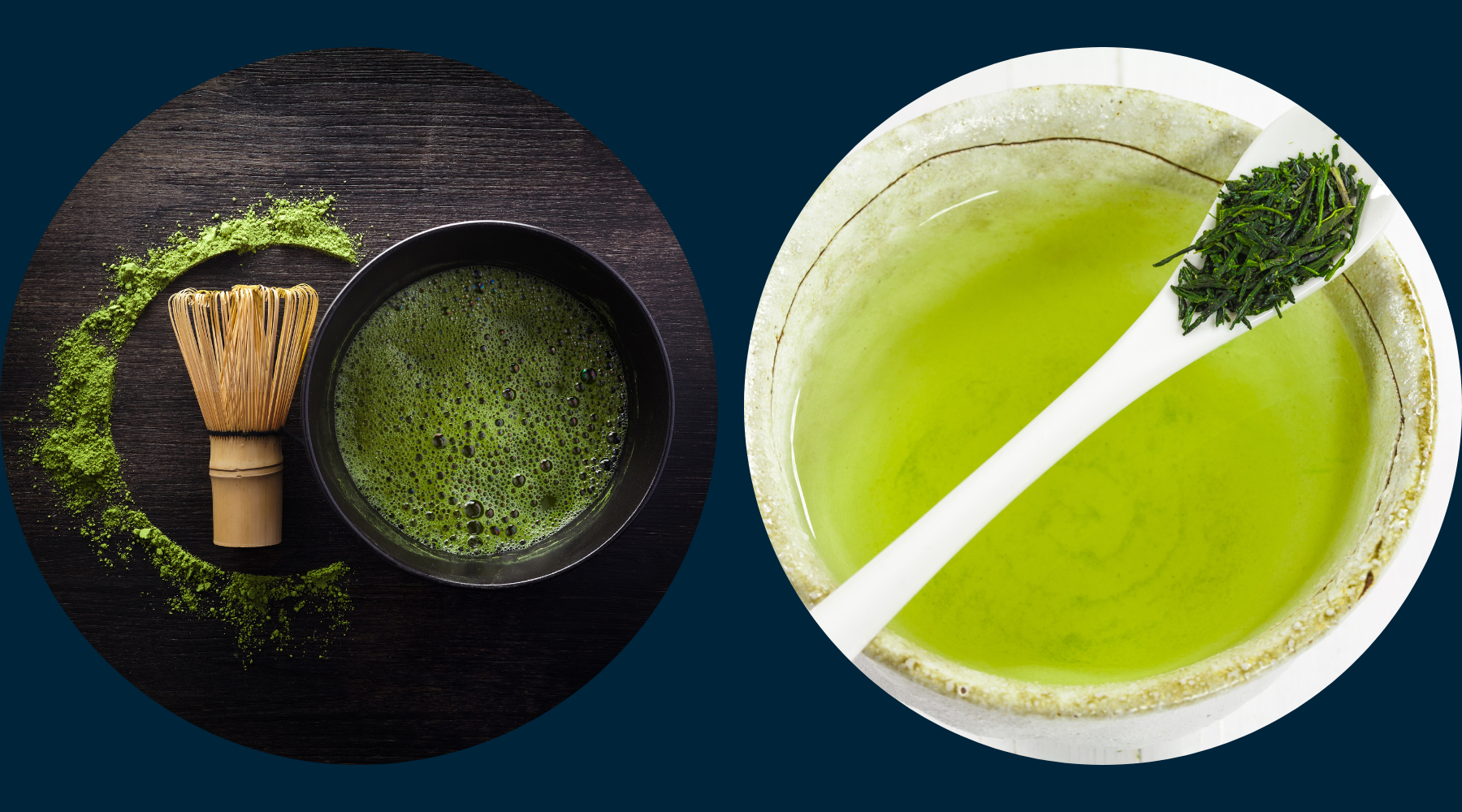
Matcha vs. Gyokuro: Unveiling the Differences
Introduction
Matcha and gyokuro are both renowned Japanese green teas that come from the camellia sinensis plant. But do you know the key differences between them? In this article, we'll delve into the fascinating world of these two tea varieties, comparing their origins, production, flavor profiles, health benefits, brewing techniques, culinary uses, and more.
So, let's dive in and discover which tea suits your taste buds and lifestyle!
The Origins
Matcha
Matcha, with its vibrant green color, dates back to the 12th century when Zen Buddhists introduced it to Japan from China. Initially used by emperors and the elite, then the Japanese tea ceremony, matcha tea soon became a popular everyday beverage. Today, it's recognized worldwide for its distinctive flavor and health benefits.
Gyokuro
Gyokuro, also known as "jade dew," is a high-quality green tea that originated in Japan in the 1800s. Like matcha, gyokuro is shade-grown, but its leaves are carefully hand-picked and then rolled into fine, needle-like shapes. This unique process gives gyokuro its distinct taste and appearance.
Subscribe to this blog's RSS feed using http://premium-health-japan.myshopify.com/blogs/news.atom
Production Process
Shade-Growing Technique
Both matcha and gyokuro are shade-grown, meaning they are cultivated under cover for about 20-30 days before harvesting. This practice increases chlorophyll content and reduces tannins, giving both teas their characteristic sweetness and umami flavor.
Harvesting and Processing
For matcha, the leaves are steamed, dried, and then ground into a fine powder. Gyokuro, on the other hand, is harvested, steamed, and then rolled into thin, needle-like shapes before drying. This difference in processing affects the teas' flavors and the way they are prepared.
Flavor Profiles
Matcha
Matcha is known for its intense, umami-rich flavor with a hint of sweetness and a creamy texture. It has a vibrant green color and a strong, grassy aroma.
Gyokuro
Gyokuro offers a delicate, sweet taste with a rich umami flavor and a silky mouthfeel. It has a deep green color and a fresh, grassy aroma with a hint of seaweed.
Health Benefits
Matcha
Matcha is packed with antioxidants, particularly catechins, which are known for their cancer-fighting properties. It also contains L-theanine, an amino acid that promotes relaxation and reduces stress. Matcha provides a gentle caffeine boost, making it an excellent alternative to coffee for sustained energy without the anxiety.
Gyokuro
Gyokuro shares many of the same health benefits as matcha, including high levels of antioxidants and L-theanine. However, because gyokuro leaves are harvested at a later stage, it contains a slightly higher caffeine content than matcha, making it a good choice for those seeking a stronger energy boost.
Brewing Techniques
Matcha
Preparing matcha involves whisking the matcha powder with hot water using a bamboo whisk until it becomes frothy. The ideal water temperature for matcha is around 160-175°F (70-80°C).
Gyokuro
Gyokuro is brewed using whole tea leaves and requires a lower water temperature of 140-160°F (60-70°C) to extract its delicate flavors. It's typically steeped for 1-2 minutes, and you can enjoy multiple infusions from the same tea leaves.
Culinary Uses
Matcha
Matcha's versatility makes it perfect for incorporating into various recipes, such as smoothies, lattes, baked goods, and even savory dishes. Its vibrant green color and unique flavor add a touch of sophistication to any dish.
Gyokuro
While not as widely used in cooking as matcha, gyokuro can still be incorporated into recipes that call for green tea. Its subtle flavor profile lends itself well to delicate dishes like desserts, salads, or even as a simple iced tea.
Matcha vs. Gyokuro - Caffeine
When comparing matcha and Gyokuro, it's essential to consider their caffeine content, as this may affect your choice depending on your sensitivity or personal preferences.
Matcha
Matcha contains roughly 30-70 milligrams of caffeine per 8-ounce serving, depending on the grade and preparation method. This amount is slightly higher than that of regular green tea but lower than a cup of coffee, making matcha a popular choice for a more balanced and steady energy boost without the anxiety effects.
Gyokuro
Gyokuro contains around 40-80 milligrams of caffeine per 8-ounce serving, making it slightly higher in caffeine content than matcha. This is due to the later stage of leaf harvesting, which allows the tea plant to develop more caffeine. Gyokuro's higher caffeine content provides a stronger, more sustained energy boost, making it an ideal choice for those looking for an alternative to coffee with added health benefits.
Making the Right Choice
When choosing between matcha and gyokuro based on caffeine content, consider your personal preferences and sensitivity to caffeine. If you're looking for a milder, more balanced energy boost, matcha may be your go-to choice. However, if you prefer a slightly stronger kick of caffeine, gyokuro could be the perfect option.
Keep in mind that both teas offer unique taste experiences and health benefits, so experimenting with both can help you find the perfect balance for your lifestyle.
Price Considerations
Gyokuro is generally more expensive than matcha due to its labor-intensive production process and limited availability. However, both teas are available in different grades and price ranges, so you can find options that fit your budget.
Choosing the Right Tea for You
Consider your taste preferences, health goals, and brewing techniques when deciding between gyokuro and matcha. If you enjoy a robust, umami-rich flavor and the convenience of powdered tea, matcha might be the right choice. If you prefer a more delicate, sweet taste and the experience of brewing whole tea leaves, gyokuro could be your ideal tea.
Conclusion
In the end, both matcha and gyokuro offer unique taste experiences and health benefits. You might even find yourself enjoying both teas for different occasions. So, why not explore the world of Japanese green tea and discover the delightful nuances of matcha and gyokuro?
FAQs
-
What is the main difference between matcha and gyokuro? The main difference lies in their processing: matcha is ground into a fine powder, while gyokuro is rolled into needle-like shapes. This affects their flavor profiles, preparation methods, and culinary uses.
-
Which tea has more caffeine, matcha or gyokuro? Gyokuro typically has slightly higher caffeine content than matcha due to the later harvest of its leaves.
-
Can I substitute matcha for gyokuro in recipes, and vice versa? While it's possible to substitute one for the other, be aware that their distinct flavor profiles and textures may affect the final outcome of the dish. It's best to experiment and adjust the quantity or method as needed to achieve the desired taste.
-
How long does matcha and gyokuro stay fresh? To ensure freshness, both matcha and gyokuro should be stored in an airtight container, away from light, moisture, and strong odors. Generally, matcha is best consumed within 3-6 months of opening, while gyokuro can retain its freshness for up to a year.
-
Are matcha and gyokuro suitable for people with caffeine sensitivity? Both matcha and gyokuro contain caffeine, though in varying amounts. If you're sensitive to caffeine, it's best to consume these teas in moderation, opt for lower-caffeine alternatives, or consult a healthcare professional for advice.
Matcha and Acne: Can it Help Clear Your Skin?
This article explores the potential benefits of matcha for acne-prone skin. Matcha, a finely ground green tea powder, is rich in antioxidants and nutrients that may help reduce inflammation, regulate...

Matcha and Acne: Can it Help Clear Your Skin?
Outline |
|
|---|---|
| 1. Introduction | |
| 2. What is Matcha? | |
| 2.1. Origin and History | |
| 2.2. Nutritional Profile | |
| 3. What Causes Acne? | |
| 3.1. Hormones | |
| 3.2. Bacteria | |
| 3.3. Clogged Pores | |
| 4. How Matcha May Help With Acne | |
| 4.1. Antioxidants | |
| 4.2. Anti-inflammatory Properties | |
| 4.3. Hormone Regulation | |
| 5. How to Use Matcha for Acne | |
| 5.1. Drinking Matcha | |
| 5.2. Topical Applications | |
| 6. Precautions and Side Effects | |
| 7. Conclusion | |
| 8. FAQs |
1. Introduction
Acne can be a real pain, right? Whether you're a teenager or an adult, those pesky pimples never seem to leave us alone. But have you ever thought about using matcha to help clear your skin? If you're curious about how matcha might help with acne, then you've come to the right place!
2. What is Matcha?

2.1. Origin and History
Matcha is a type of green tea, but it's not just any green tea. It's a finely ground powder made from specially grown and processed tea leaves. Originally from China, matcha made its way to Japan in the 12th century, where it became a staple of the traditional Japanese tea ceremony.
2.2. Nutritional Profile
Matcha is packed with nutrients and antioxidants that benefit both your body and your skin. It contains vitamins A, C, and E, as well as minerals like potassium, calcium, and iron. Matcha also has a higher concentration of the antioxidant EGCG compared to regular green tea.
3. What Causes Acne?

3.1. Hormones
Hormones play a significant role in the development of acne. Androgens, such as testosterone, can increase sebum production, leading to oily skin and clogged pores.
3.2. Bacteria
Bacteria, specifically Propionibacterium acnes, can cause inflammation and redness when it becomes trapped inside hair follicles with excess sebum.
3.3. Clogged Pores
When dead skin cells, oil, and bacteria accumulate, they can clog your pores, leading to the formation of pimples, blackheads, and whiteheads.
4. How Matcha Can Help With Acne
4.1. Antioxidants
Matcha's high antioxidant content can help protect your skin from free radicals, which can cause inflammation and damage to skin cells.
4.2. Anti-inflammatory Properties
Matcha contains powerful anti-inflammatory compounds like EGCG, which may reduce redness and inflammation associated with acne.
4.3. Hormone Regulation
Some studies suggest that green tea consumption may help regulate hormone levels, which could potentially reduce acne breakouts.
5. How to Use Matcha for Acne
5.1. Drinking Matcha
Incorporate matcha into your daily routine by drinking it as a tea or adding it to smoothies and lattes. Consuming matcha regularly can help you reap its potential acne-fighting benefits.
5.2. Topical Applications
You can also apply matcha directly to your skin by creating a DIY matcha face mask. Mix matcha powder with water, honey, or yogurt to form a paste, then apply it to your face. Leave the mask on for 10-15 minutes before rinsing it off with warm water. This can help reduce inflammation and redness, as well as gently exfoliate your skin.
6. Precautions and Side Effects
While matcha is generally safe for consumption and topical use, it's essential to be cautious. If you're new to matcha, start with small amounts to see how your body reacts. In some cases, people may experience stomach upset or allergic reactions. When applying matcha topically, always do a patch test first to ensure you don't have an adverse reaction.
7. Conclusion
Matcha's antioxidant and anti-inflammatory properties could potentially help clear your skin by reducing inflammation, regulating hormones, and protecting against free radical damage. While there's no guarantee that matcha will work for everyone, it's worth giving it a try if you're looking for a natural way to combat acne. Just remember to proceed with caution and consult a dermatologist if you have any concerns.
8. FAQs
1. Can I use any green tea powder for acne treatment?
While any green tea powder may provide some benefits, matcha has a higher concentration of antioxidants and nutrients, making it a better choice for acne treatment.
2. How often should I drink matcha for acne?
There's no set rule, but incorporating matcha into your daily routine, such as drinking one or two cups per day, can help you reap its potential benefits.
3. Can I use matcha if I have sensitive skin?
Yes, but proceed with caution. Always do a patch test before applying matcha to your face and consider using a gentler ingredient like yogurt in your DIY face mask.
4. Can I replace my acne medication with matcha?
It's not recommended to replace prescribed acne medication with matcha without consulting your dermatologist. Matcha might be a helpful addition to your skincare routine, but it shouldn't replace professional medical advice.
5. How long does it take to see results from using matcha for acne?
Results may vary from person to person. Some may see improvements within a few weeks, while others may take longer. Consistency is key when using matcha for acne treatment.
Subscribe to this blog's RSS feed using http://premium-health-japan.myshopify.com/blogs/news.atom
Japanese Tea Ceremonies: A Beginner's Guide
In this beginner's guide to Japanese tea ceremonies, we delve into the history, principles, and types of tea ceremonies, while providing insight into the significance of aesthetics and the tea...

Japanese Tea Ceremonies: A Beginner's Guide
Introduction
Immerse yourself in the rich cultural heritage of Japan with this beginner's guide to Japanese tea ceremonies. These serene rituals have been an integral part of Japanese tradition for centuries, offering a transformative experience that will transport you into a world of mindfulness, hospitality, and artistry.
In this comprehensive guide, we will explore the history, key elements, and significance of Japanese tea ceremonies, as well as how you can participate in or even host one yourself.
The History of Japanese Tea Ceremonies
The origins of the Japanese tea ceremony, also known as "chanoyu" or "sado," can be traced back to China, where tea was first discovered and enjoyed. It was brought to Japan by Buddhist monks in the 9th century, who initially used tea as a means of staying alert during meditation. Over time, the consumption of tea in Japan evolved into a sophisticated ritual with deep spiritual and cultural significance.
The tea ceremony as we know it today was heavily influenced by Zen Buddhism, as well as the aesthetics and principles of Japanese culture. Sen no Rikyu, a 16th-century tea master, is considered the father of the modern tea ceremony. He emphasized the importance of simplicity, purity, and harmony in the practice of tea, and his teachings still form the foundation of Japanese tea ceremonies today.
The Principles of the Tea Ceremony
The Japanese tea ceremony is built upon four core principles: harmony (wa), respect (kei), purity (sei), and tranquility (jaku). These principles are not only essential to the tea ceremony itself but also serve as a guide for living a balanced and fulfilling life.
Harmony (wa):
This principle encourages the appreciation of nature, beauty, and the connections between people and their environment. Participants in the tea ceremony should feel in harmony with each other and their surroundings.
Respect (kei):
Demonstrating respect is crucial during a tea ceremony, as it encourages mutual understanding and appreciation. This can be shown through gestures, words, and the way one handles tea utensils.
Purity (sei):
The act of purifying oneself and the ceremony space is an essential element of the tea ceremony. This includes the physical cleansing of the tea room and utensils, as well as the spiritual cleansing of one's mind.
Tranquility (jaku):
Achieving a state of inner peace and tranquility is the ultimate goal of the tea ceremony. It allows participants to be fully present in the moment, free from the distractions of everyday life.
The Tea Ceremony Process

The Japanese tea ceremony typically follows a precise sequence of events, which includes the following steps:
Preparation:
The host cleans the tea room and prepares the tea utensils, while guests cleanse their hands and mouths with water upon arrival. This purification process is symbolic of leaving the outside world behind and entering a sacred space.
The Host's Entrance:
The host enters the tea room and purifies the tea utensils with a silk cloth, symbolizing the removal of dust and impurities.
The Tea Preparation:
The host prepares the tea by adding powdered green tea (matcha) to a tea bowl and whisking it with hot water using a bamboo whisk. The tea is usually thick and frothy, with a rich, earthy flavor.
Serving the Tea:
The host serves the tea to the guests, who admire the tea bowl's design and craftsmanship before drinking the tea.
Refreshments:
Light sweets, called "wagashi," are often served before or alongside the tea to balance the bitter taste of the matcha.
Conclusion:
The host cleans the tea utensils one last time and thanks the guests for their participation. Guests express their gratitude to the host and take their leave, marking the end of the tea ceremony.
The Role of Aesthetics in the Tea Ceremony
Aesthetics play a significant role in the Japanese tea ceremony, with a focus on simplicity, elegance, and a deep appreciation of beauty. The tea room itself is carefully designed and decorated to create a serene and harmonious atmosphere. Natural materials, such as tatami mats, paper screens, and wooden utensils, are used to bring the essence of nature indoors.
Seasonal elements, like flowers or hanging scrolls, are thoughtfully selected and placed in the tea room to enhance the overall experience. Even the smallest details, such as the shape, color, and texture of the tea utensils, are chosen with care to evoke a sense of beauty and harmony.
Types of Tea Ceremonies
There are two main types of tea ceremonies in Japan: the formal "chaji" and the more casual "chakai."
Chaji:
A chaji is an elaborate, formal tea gathering that can last up to four hours. It includes a full-course meal (kaiseki), followed by the serving of thick tea (koicha) and thin tea (usucha). The chaji often takes place in a traditional tea house or a separate tea room within a private residence, and participants are expected to follow strict etiquette.
Chakai:
A chakai is a more informal tea gathering, usually lasting around one hour. It generally involves the serving of thin tea (usucha) and sweets, without the inclusion of a full-course meal. The chakai is more accessible to beginners, as it offers a less formal introduction to the world of the tea ceremony.
Participating in a Tea Ceremony

If you're interested in experiencing a Japanese tea ceremony for yourself, there are several ways to do so:
Visit Japan:
Many traditional tea houses, cultural centers, and even some hotels in Japan offer tea ceremony experiences for visitors. Be sure to research and book in advance, as some venues require reservations.
Attend a local workshop or class:
Some cities around the world have Japanese cultural centers or tea schools that offer tea ceremony workshops or classes. This can be a great way to learn about the intricacies of the tea ceremony and even practice your skills.
Host your own tea ceremony:
With some research, practice, and the right tools, you can host a simple tea ceremony at home. Keep in mind that it may take time to master the various techniques and etiquette, but the experience can be incredibly rewarding.
Conclusion
The Japanese tea ceremony is a beautiful and meditative practice that embodies the principles of harmony, respect, purity, and tranquility. By participating in this centuries-old tradition, you can gain a deeper appreciation for Japanese culture and aesthetics, while also cultivating a sense of inner peace and mindfulness.
Whether you choose to attend a formal chaji or a more casual chakai, experiencing a Japanese tea ceremony is sure to be an unforgettable and enriching experience.
For more about this ancient practice, visit our Japanese Tea Ceremony page.
Matcha: A Brief History
This article explores the rich history of matcha, a vibrant green tea powder, from its origins in China's Tang and Song Dynasties to its introduction and evolution in Japan. As...

Matcha: A Brief History
Introduction
Matcha, the vibrant green tea powder, has been gaining popularity worldwide for its captivating taste and numerous health benefits. While its presence in cafes and grocery stores might feel like a recent trend, matcha's history is deep-rooted and spans over a millennium.
This article delves into the fascinating story of matcha, from its humble beginnings in ancient China to its esteemed status in Japanese culture.
The Early Beginnings: China
The tale of matcha dates back to the Tang Dynasty in China, around the 7th to 10th centuries. During this period, tea was considered a precious commodity and was often reserved for the elite. Tea leaves were harvested, steamed, and compressed into bricks for transportation and trade, which was the most convenient method at the time.
To prepare a cup of tea, a piece of the tea brick was broken off, pulverized, and mixed with hot water. This early tea preparation method laid the groundwork for what would later become matcha.
During the Song Dynasty (960-1279), tea cultivation and consumption flourished. The Chinese introduced a new tea preparation method, known as "whisking tea." Tea leaves were ground into a fine powder and whisked with hot water, creating a frothy beverage that closely resembled modern-day matcha. This new way of consuming tea gained popularity and was even celebrated in the famous "Treatise on Tea" by Emperor Huizong in 1107.
The Journey to Japan

The origins of matcha in Japan can be traced back to the 12th century when the Zen Buddhist monk Eisai brought tea seeds from China to the island nation. The seeds were planted in the Kyoto region, and the Japanese began cultivating their tea. However, it was not until the Kamakura period (1185-1333) that matcha, as we know it today, began to take shape in Japan.
Eisai, who is often credited with popularizing Zen Buddhism in Japan, was also influential in introducing the concept of whisking tea. He wrote the famous book "Kissa Yōjōki" (喫茶養生記), which translates to "Drinking Tea for Health," in 1211. The book extolled the health benefits of tea, particularly matcha, and encouraged its consumption as a means to promote mental clarity and longevity.
Matcha and Zen Buddhism
The relationship between matcha and Zen Buddhism is inextricable. The Zen monks embraced the ritual of preparing and consuming matcha as a form of meditation, which helped them achieve the heightened state of focus and mindfulness necessary for their practice. The tea ceremony, known as "chado" or "sado" (茶道), became an integral part of monastic life.
The tea ceremony's development is often attributed to Murata Jukō (1423-1502), a Zen monk who emphasized the spiritual aspects of tea drinking. Jukō, considered the father of the Japanese tea ceremony, advocated for "wabi-sabi" – an appreciation of simplicity, modesty, and the imperfections of life – in the practice. This philosophy became the cornerstone of the tea ceremony and remains at its core today.
Matcha in the Japanese Warrior Class

During the 14th and 15th centuries, matcha consumption spread beyond the confines of the monastery and into the samurai class. The warriors, inspired by the Zen monks, integrated the tea ceremony into their code of conduct, known as "bushido." The samurai believed that the practice of chado helped them develop discipline, mental fortitude, and a heightened sense of awareness.
Tea gatherings, or "chanoyu," became an essential part of samurai culture, providing an opportunity for warriors to forge alliances and demonstrate their mastery of the tea ceremony. These gatherings also allowed them to showcase their exquisite tea utensils, which were often considered status symbols.
The Golden Age of Matcha

The 16th century marked a turning point in the history of matcha, often referred to as its golden age. The Japanese tea ceremony gained widespread popularity, and matcha became a symbol of luxury and sophistication. This period saw the rise of the "great tea masters," such as Sen no Rikyū (1522-1591), who significantly influenced the development of the tea ceremony.
Rikyū, considered the most revered tea master in Japanese history, introduced several innovations to the tea ceremony that are still practiced today. He emphasized the importance of harmony, respect, purity, and tranquility – the four principles of chado. Rikyū also advocated for the use of locally made, rustic tea utensils, which aligned with the wabi-sabi aesthetic.
Find out everything you need to know about the Japanese tea ceremony here.
The Decline and Resurgence of Matcha
During the Edo period (1603-1868), the popularity of matcha declined as commoners began to favor sencha, a more affordable and accessible form of green tea. Matcha became increasingly associated with the elite, and its consumption was primarily limited to the aristocracy and the samurai class.
The modern resurgence of matcha began in the late 20th century, as its health benefits caught the attention of the global community. Rich in antioxidants, particularly catechins, matcha has been linked to a range of health benefits, including improved heart health, increased metabolism, and reduced inflammation.
Moreover, the presence of L-theanine, an amino acid found in matcha, is believed to promote relaxation and reduce stress, aligning with the Zen principles that have long been associated with matcha consumption.
Today, matcha is enjoyed worldwide as a versatile ingredient in a variety of culinary applications, from traditional tea to lattes, smoothies, and baked goods. Its vibrant green color, unique taste, and numerous health benefits have solidified its status as a sought-after superfood.
Conclusion
The history of matcha is a fascinating journey, reflecting the intricate relationship between culture, spirituality, and the art of tea. From its early beginnings in ancient China to its evolution in Japan as a symbol of Zen Buddhism and the samurai's code of conduct, matcha has transcended time and borders to become a beloved beverage worldwide.
Want to learn more about the history of matcha? Check out our History of Matcha page.
As we savor each sip of this vibrant green tea, we partake in a centuries-old tradition, appreciating the harmony, respect, purity, and tranquility it embodies.
Matcha and Brain Health: How This Superfood Can Boost Focus, Memory, and Creativity
Matcha, a powdered green tea, is believed to boost cognitive function and promote brain health. This article explores how matcha can enhance cognitive function, including its ability to boost focus,...

Matcha and Brain Health: How This Superfood Can Boost Focus, Memory, and Creativity
Matcha is a finely ground green tea powder that has been enjoyed in Japan for centuries. Unlike regular green tea, which is made by steeping the tea leaves in hot water and then discarding them, matcha tea is made by grinding the entire tea leaf into a powder, which is then whisked into hot water. This process allows for a higher concentration of nutrients and antioxidants, making matcha a true superfood.
In recent years, matcha has gained popularity in the West as a trendy ingredient in lattes, smoothies, and baked goods. But beyond its delicious flavor and vibrant green hue, matcha has also been shown to have a range of health benefits, particularly for brain function.
In this article, we'll explore how matcha can enhance cognitive function, the science behind its brain-boosting properties, and some delicious matcha recipes for brain health.
How Matcha Enhances Cognitive Function
The caffeine in matcha is one way that it can enhance cognitive function. Like coffee, matcha contains caffeine, which is a central nervous system stimulant that can help increase alertness and concentration. However, unlike coffee, matcha also contains an amino acid called L-theanine, which has a calming effect on the brain and can help reduce anxiety and stress.
The combination of caffeine and L-theanine in matcha is what makes it unique. While caffeine can sometimes cause anxiety, the L-theanine in matcha can help counteract these effects and promote a sense of relaxation and focus. This is because L-theanine has been shown to increase alpha brain waves, which are associated with a state of relaxed alertness.
The Science of Matcha and Brain Health
Matcha has been the subject of several studies examining its effects on brain function. One study published in the Journal of Medicinal Food found that consuming matcha improved attention and reaction time in participants compared to a placebo group. Another study found that matcha can improve cognitive function during or after stress conditions in young adults.
The high concentration of antioxidants in matcha is also thought to play a role in its brain-boosting properties. Antioxidants are compounds that protect the body from oxidative stress, which can damage cells and contribute to aging and disease. In particular, the antioxidant epigallocatechin gallate (EGCG) in matcha has been shown to have neuroprotective effects and may help prevent cognitive decline.
Subscribe to this blog's RSS feed using http://premium-health-japan.myshopify.com/blogs/news.atom
Matcha and Attention Span: Boosting Focus and Concentration
The caffeine and L-theanine in matcha can work together to improve attention span and concentration. One study concluded that the combination of L-theanine and caffeine is likely a safe and effective cognitive enhancer.
Another study published in the journal Nutritional Neuroscience found that consuming a combination of caffeine and L-theanine, like that found in matcha, improved attention and task-switching in participants performing a demanding cognitive task.
Memory Boosting Benefits of Matcha
In addition to improving attention and concentration, matcha may also have memory boosting benefits. A study published in the journal Bentham Science found that consuming green tea extract, which contains many of the same compounds as matcha, improved memory and cognitive function in healthy adults.
Another study published in the Journal of Nutrition found that drinking green tea was associated with a reduced risk of cognitive impairment in older adults. While more research is needed to determine the specific effects of matcha on memory, these studies suggest that the antioxidants and other compounds in matcha may counter memory loss.
Matcha and Creativity: Enhancing Brain Function for Increased Productivity
The caffeine and L-theanine in matcha may also enhance creativity and productivity. The caffeine in matcha can increase alertness and energy, while the L-theanine can promote relaxation and focus.
This combination can help stimulate creative thinking and increase productivity. Furthermore, the antioxidants in matcha may also help protect brain cells from damage and promote overall brain health, which can support long-term creativity and productivity.
The Role of Antioxidants in Matcha and Brain Health
Antioxidants play an important role in brain health, as they can help protect brain cells from damage and inflammation. Oxidative stress, which is caused by an imbalance between antioxidants and free radicals in the body, can contribute to aging and disease.
By consuming foods and beverages that are high in antioxidants, such as matcha green tea, you can help support brain health and reduce the risk of cognitive decline.
Matcha's Antioxidant Profile and Its Benefits for Brain Health
Matcha is packed with antioxidants, including catechins, flavonoids, and polyphenols. One particular antioxidant found in matcha is epigallocatechin gallate (EGCG), which has been shown to have neuroprotective effects and may help prevent cognitive decline.
In a study published in the Journal of Alzheimer's Disease, researchers found that EGCG can reduce beta-amyloid plaques in the brain, which are a hallmark of Alzheimer's disease. Another study found that EGCG can improve cognitive function and reduce brain inflammation in mice with Alzheimer's-like symptoms.
These studies suggest that the antioxidants in matcha, particularly EGCG, may have powerful benefits for brain health and may help protect against cognitive decline and disease.
How Matcha's L-Theanine Affects Brain Waves and Reduces Stress
L-theanine is an amino acid found in matcha that has been shown to have a calming effect on the brain. It works by increasing alpha brain waves, which are associated with a state of relaxed alertness. This can help reduce stress and anxiety, which can have a negative impact on cognitive function.
In a study published in the Journal of Functional Foods, researchers found that consuming L-theanine improved relaxation and reduced stress in participants compared to a placebo group. Another study published in the journal Biological Psychology found that L-theanine can improve attention and reaction time in response to cognitive stress.
These studies suggest that the L-theanine in matcha can have powerful benefits for reducing stress and improving cognitive function.
Neuroprotective Properties of Matcha and How They Protect the Brain from Aging and Disease
The antioxidants and other compounds in matcha have powerful neuroprotective properties, which can help protect the brain from aging and disease. In addition to its antioxidant content, matcha also contains other compounds that have been shown to have neuroprotective effects, including the amino acid theanine and the polyphenol catechin.
One study published in the journal Nutrients found that drinking green tea, which contains many of the same compounds as matcha, was associated with a reduced risk of cognitive decline in older adults. Another study published in the Journal of Neuroscience found that the polyphenol catechin can improve spatial memory and reduce cognitive decline in mice.
These studies suggest that consuming matcha, with its high concentration of antioxidants, theanine, and catechins, may help protect the brain from aging and disease and support overall brain health.
Matcha Recipes for Brain Health
Now that we've explored the science behind matcha and brain health, let's take a look at some delicious matcha recipes that can help support cognitive function.
Matcha Latte Recipe for Boosting Cognitive Function
Ingredients:
-
1 teaspoon matcha powder
-
1 cup almond milk
-
1 teaspoon honey
Instructions:
-
In a small saucepan, heat the almond milk over medium heat until it starts to steam.
-
In a separate bowl, whisk together the matcha powder and a splash of hot water until it forms a smooth paste.
-
Pour the matcha paste into the saucepan with the almond milk and whisk until fully combined.
-
Add the honey and continue to whisk until everything is fully mixed together.
-
Pour the matcha latte into a mug and enjoy.
This matcha latte recipe is a great way to start your day and give your brain a boost of energy and focus. The almond milk provides a creamy and nutty flavor, while the honey adds a touch of sweetness.
Matcha Smoothie Recipe for Improved Brain Function
Ingredients:
-
1 teaspoon matcha powder
-
1 banana
-
1 cup almond milk
-
1/2 cup frozen blueberries
-
1 tablespoon honey
Instructions:
-
Add all of the ingredients to a blender and blend until smooth.
-
Pour the matcha smoothie into a glass and enjoy.
This matcha smoothie recipe is packed with antioxidants and brain-boosting nutrients. The banana adds a creamy texture, while the blueberries provide a sweet and tart flavor. The almond milk and honey bring everything together and create a delicious and healthy drink.
Matcha Energy Balls Recipe for Mental Clarity and Focus
Ingredients:
-
1 cup rolled oats
-
1/2 cup almond butter
-
1/4 cup honey
-
1/4 cup unsweetened shredded coconut
-
1 tablespoon matcha green tea powder
Instructions:
-
In a large bowl, mix all of the ingredients together until fully combined.
-
Roll the mixture into small balls, about the size of a tablespoon.
-
Place the matcha energy balls in the refrigerator for at least 30 minutes to firm up.
-
Once the energy balls are firm, you can store them in an airtight container in the refrigerator.
These matcha energy balls are a great snack to help boost mental clarity and focus. The rolled oats provide fiber and sustained energy, while the almond butter and honey add a touch of sweetness. The unsweetened shredded coconut adds a nutty flavor and texture, and the matcha powder brings everything together and provides a powerful dose of antioxidants and brain-boosting nutrients.
Final Thoughts
Matcha is a superfood that can have powerful benefits for brain health. Its combination of caffeine and L-theanine can improve attention, focus, and creativity, while its high concentration of antioxidants can help protect the brain from aging and disease.
By incorporating matcha into your diet with these delicious recipes, you can support your cognitive function and overall brain health.
Matcha Tea For Weight Loss – How It Helps Burn Fat
This article discusses how matcha tea can aid in weight loss by increasing metabolism, burning fat, reducing appetite, improving sleep quality, and reducing fatigue and soreness after workouts. It also...

Matcha Tea For Weight Loss – How It Helps Burn Fat
Matcha is a traditional Japanese green tea powder that has become popular all over the world because it is good for your health. In recent years, matcha tea has gained attention for its potential to aid in weight loss.
This article explores the ways in which matcha tea can help burn fat and increase metabolism, as well as tips for making and consuming matcha for weight loss.
Studies have shown that drinking more matcha green tea increases metabolism and fat burning — both of which can help promote weight loss!
Matcha green tea has been found to contain high levels of catechins, a type of antioxidant that has been linked to increased metabolism and fat burning.
One study published in the American Journal of Clinical Nutrition found that consuming green tea extract with a high catechin content, such as matcha, led to a significant increase in energy expenditure and fat oxidation compared to a placebo group.

Another study published in the International Journal of Obesity found that participants who consumed green tea extract with 625mg catechins and 39mg caffeine daily for 12 weeks experienced significant reductions in body weight, BMI, waist circumference, and body fat percentage.
These findings suggest that drinking matcha green tea regularly may help promote weight loss by boosting metabolism and fat burning.
Subscribe to this blog's RSS feed using http://premium-health-japan.myshopify.com/blogs/news.atom
Low In Calories
Matcha green tea is low in calories, making it an excellent beverage choice for those looking to lose weight. A standard serving of matcha tea contains just 3 calories, which is significantly lower than many other sugary drinks.

What's more, matcha tea contains a type of carbohydrate called catechin gallate esters, which can help regulate blood sugar levels and reduce cravings for sweets.
By replacing high-calorie beverages with matcha tea, individuals can reduce their calorie intake and lose weight.
Matcha Green Tea's Nutritional Profile
Matcha green tea is a highly nutritious beverage that contains numerous vitamins, minerals, and antioxidants. One serving of matcha tea (approximately 1 gram) contains 30% of the recommended daily intake (RDI) of manganese, which is important for bone health and metabolism.

It also contains small amounts of other essential nutrients such as vitamin C, vitamin K, potassium, and magnesium.
Matcha tea is also high in antioxidants, particularly catechins, which can help protect against oxidative stress and chronic diseases. Overall, matcha tea is a great addition to a healthy lifestyle due to its numerous health benefits.
Converts White Fat Into Brown Fat
Matcha tea contains a type of antioxidant called epigallocatechin gallate (EGCG), which has been found to have anti-obesity properties. One of the ways that EGCG may help with weight loss is by converting white adipose tissue, which stores energy and contributes to weight gain, into brown adipose tissue, which burns calories and helps regulate body temperature.
A study published in the Journal of Nutritional Biochemistry found that mice fed a high-fat diet supplemented with EGCG had increased brown adipose tissue and decreased body weight compared to a control group.
While more research is needed to determine the effects of EGCG on brown adipose tissue in humans, these findings suggest that consuming matcha tea may have potential as a natural way to promote weight loss.
How about metabolism boosting?

Matcha tea has been found to increase metabolism, which is the process by which the body converts food into energy. A study published in the Journal of Medicinal Food found that consuming green tea extract with a high catechin content, such as matcha, led to an increase in resting metabolic rate compared to a placebo group.
On top of this, matcha tea contains caffeine, which has been found to increase metabolism and energy expenditure.
Another study published in the Journal of the American College of Nutrition found that participants who consumed a combination of catechins and caffeine experienced significant increases in fat oxidation and energy expenditure compared to a control group. By boosting metabolism, matcha tea may help the body burn more calories and promote weight loss.
How To Drink Matcha Tea For Weight Loss

Here are some tips to prepare matcha tea for weight loss:
-
Consume it unsweetened and without milk to avoid added calories and fat
-
Sift 1-2 teaspoons of matcha powder into a bowl to remove clumps
-
Add 2-3 ounces of hot water (just below boiling) and mix with a bamboo whisk to create a smooth paste
-
Gradually add more hot water until the bowl is full and the tea is frothy
-
Sip the matcha tea slowly and enjoy the flavor
-
Drink matcha tea before a workout or as a replacement for high-calorie beverages to maximize its weight loss benefits
Increases Energy Levels
Matcha tea is known for its ability to boost energy levels due to its high caffeine content. One serving of matcha tea contains approximately 35mg of caffeine, which is less than a cup of coffee but enough to provide a mild energy boost.
Unlike coffee, however, matcha tea also contains L-theanine, an amino acid that has been found to promote relaxation and reduce stress. When combined with caffeine, L-theanine can help improve focus and concentration without the spikes and crashes associated with coffee.
By increasing energy levels, matcha tea can help individuals stay active and burn more calories, leading to weight loss over time.
Reduces Appetite

Matcha tea has been found to reduce appetite, which can help individuals consume fewer calories and promote weight loss. A study published in the European Journal of Clinical Nutrition found that consuming a combination of catechins and caffeine led to decreased hunger and increased satiety compared to a control group.
What's more, matcha tea contains a type of carbohydrate called EGCG, which has been found to reduce appetite and food intake. By drinking matcha tea, individuals may be able to curb their cravings and consume fewer calories, which will assist the weight loss process.
Reduces Fatigue And Soreness After Workouts
Matcha tea may help reduce fatigue and soreness after workouts, which can help individuals stay active and burn more calories. A study published in the Journal of the International Society of Sports Nutrition found that athletes who consumed green tea extract with a high catechin content, such as matcha, had decreased muscle damage and oxidative stress after exercise compared to a placebo group.

Furthermore, the caffeine in matcha tea can help improve endurance and reduce perceived exertion during workouts, which can make exercise feel easier and more enjoyable.
By reducing fatigue and soreness after workouts, matcha tea may help individuals stick to their fitness goals and promote weight loss over time.
Improves Quality Of Sleep
Matcha tea may help improve the quality of sleep, which is important for weight loss as sleep deprivation has been linked to increased appetite and decreased metabolism. Matcha tea contains L-theanine, an amino acid that has been found to promote relaxation and improve sleep quality.
A study has found that L-theanine is a natural and safe sleep aid, improving the quality of sleep. Additionally, the caffeine content in matcha tea can help promote wakefulness during the day, potentially increasing alertness and energy levels for workouts.
By improving sleep quality and promoting wakefulness, matcha tea may help individuals stay active and burn more calories, which increases the chances of losing weight.
Matcha vs. Regular Green tea - Why Matcha Powder is a superior weight loss aid
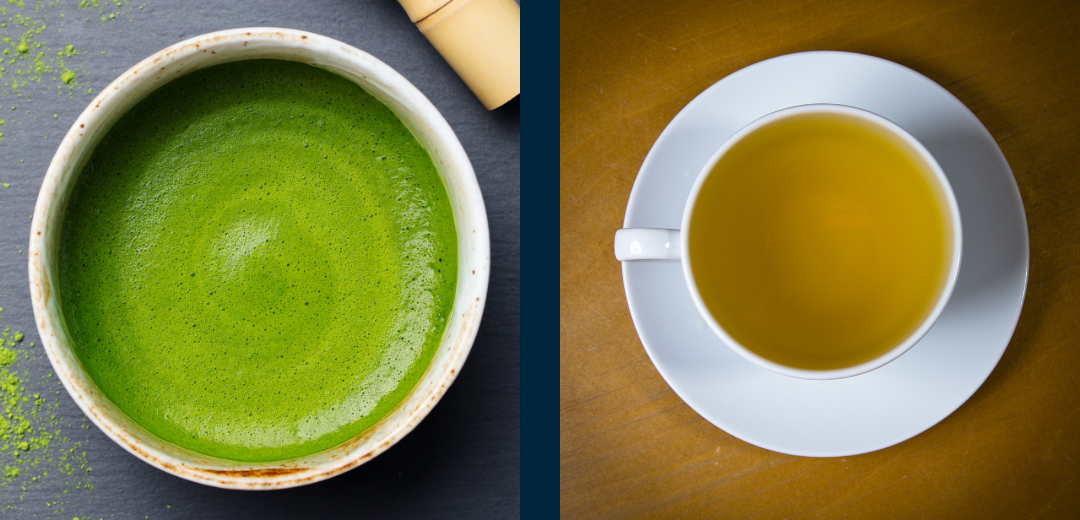
Matcha tea differs from regular green tea in its preparation and nutritional profile, which can make it a superior weight loss aid. While regular green tea is brewed by steeping tea leaves in hot water and then discarded, matcha tea is made by grinding whole tea leaves into a fine powder, allowing for a higher concentration of nutrients per serving.
Furthermore, because matcha tea is consumed whole, it contains more fiber and antioxidants compared to regular green tea. Matcha tea also contains higher levels of the amino acid L-theanine, which can help promote relaxation and improve sleep quality.
Overall, matcha tea offers a more potent combination of nutrients and beneficial compounds compared to regular green tea, making it a great choice for those looking to lose weight.
How much does matcha increase caloric burn during workouts?
While there is no exact number for how much matcha tea increases caloric burn during workouts, studies have found that consuming green tea extract with a high catechin content, such as matcha, can help improve fat oxidation and energy expenditure.
A study published in the American Journal of Clinical Nutrition found that participants who consumed green tea extract with a high catechin content experienced increased fat oxidation and energy expenditure compared to a control group.
Another study published in the Journal of the International Society of Sports Nutrition found that athletes who consumed green tea extract with a high catechin content had decreased muscle damage and oxidative stress after exercise compared to a placebo group.
While more research is needed to determine the exact effects of matcha tea on caloric burn during workouts, these findings suggest that drinking matcha tea may help individuals burn more calories and improve their fitness outcomes.
When should I drink matcha if I don't work out but want to lose weight?
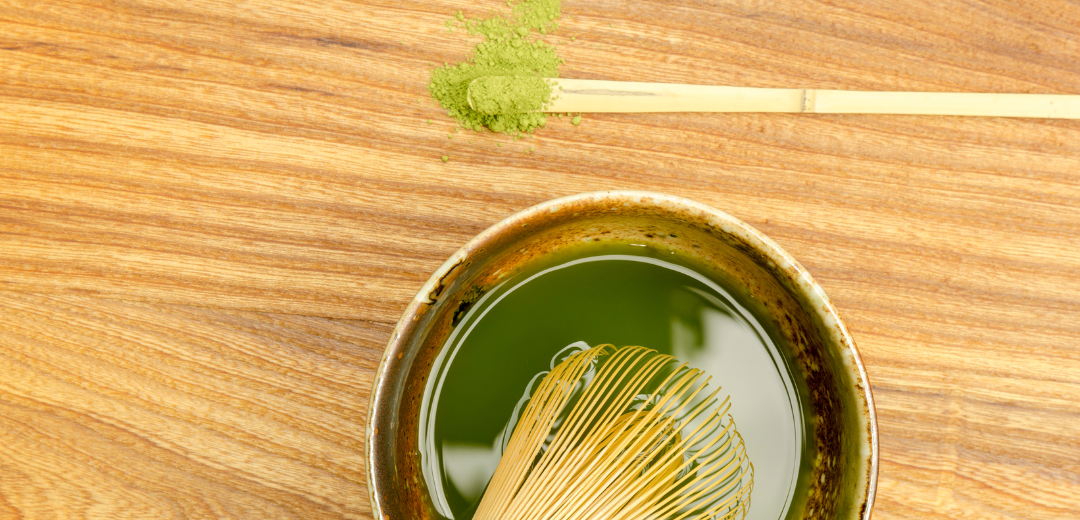
If you don't work out but want to lose weight, you can still benefit from drinking matcha tea at any time of the day. However, to maximize its potential weight loss benefits, you may want to consider drinking matcha tea in place of high-calorie beverages like fruit juices, or sugary coffee drinks.
Matcha tea is a low-calorie and nutrient-dense beverage that can help curb cravings and promote satiety, which can lead to consuming fewer calories overall. Matcha tea's caffeine content can also help increase energy levels and potentially boost metabolism.
To avoid disrupting sleep quality, it's best to consume matcha tea earlier in the day and limit consumption to no more than 2-3 servings per day.
Final Thoughts
Matcha tea is a great addition to a weight loss regimen due to its ability to increase metabolism, burn fat, reduce appetite, improve energy levels, and exercise recovery. By consuming matcha tea regularly, individuals may be able to reduce their calorie intake, stay active, and achieve their weight loss goals more easily.
Matcha Latte
Learn about the antioxidant content, energy-boosting, and stress-reducing effects of matcha latte. Compare it to coffee and find answers to common safety and moderation questions.
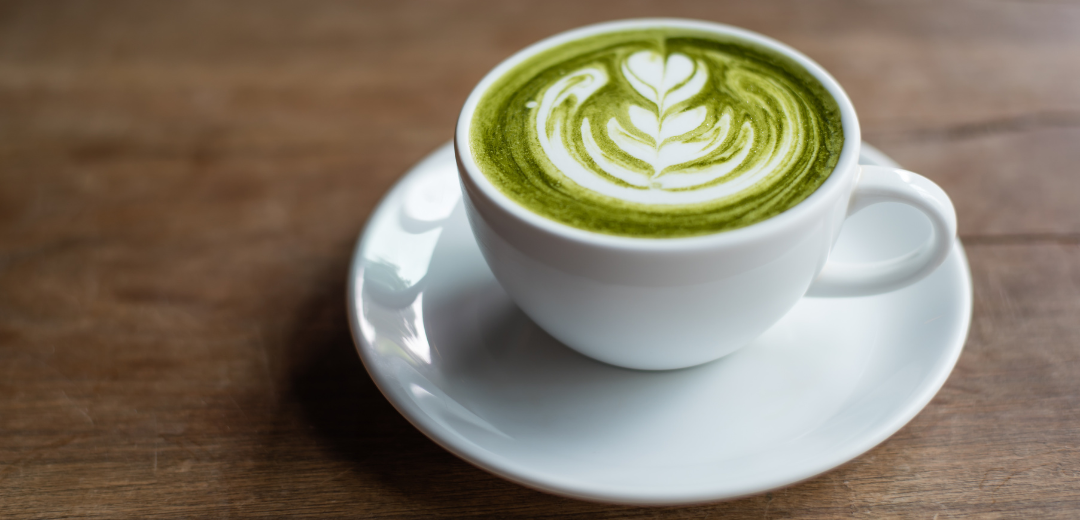
What is a matcha latte?
A traditional matcha tea latte is a type of warm beverage that combines the intense, green tea flavour of matcha powder with creamy, frothed milk. The result is a smooth, comforting drink that is both energizing and absolutely delicious.
It is often enjoyed as a morning pick-me-up or as a relaxing treat during the afternoon. Matcha lattes are becoming increasingly popular due to the health benefits of matcha and the growing trend for specialty coffee drinks.

Are Matcha lattes healthy?
Matcha green tea lattes can certainly be considered a healthier alternative to other caffeinated drinks such as coffee or soft drinks (soda). Matcha powder is made from shaded and ground green tea leaves, which makes it a highly concentrated source of antioxidants, fiber, and other beneficial compounds. These compounds can help to boost energy levels, improve mental alertness and cognitive function, and protect against oxidative stress and damage.
However, it's important to keep in mind that a typical starbucks matcha latte contains added sugar and frothed milk, which can add extra calories and decrease the overall health benefits. It's best to choose an unsweetened, organic matcha powder and use low-fat or a plant-based milk for a healthier drink. Moderation is also key with any food or drink, so it's important to not overindulge and enjoy your matcha latte as part of a balanced diet.
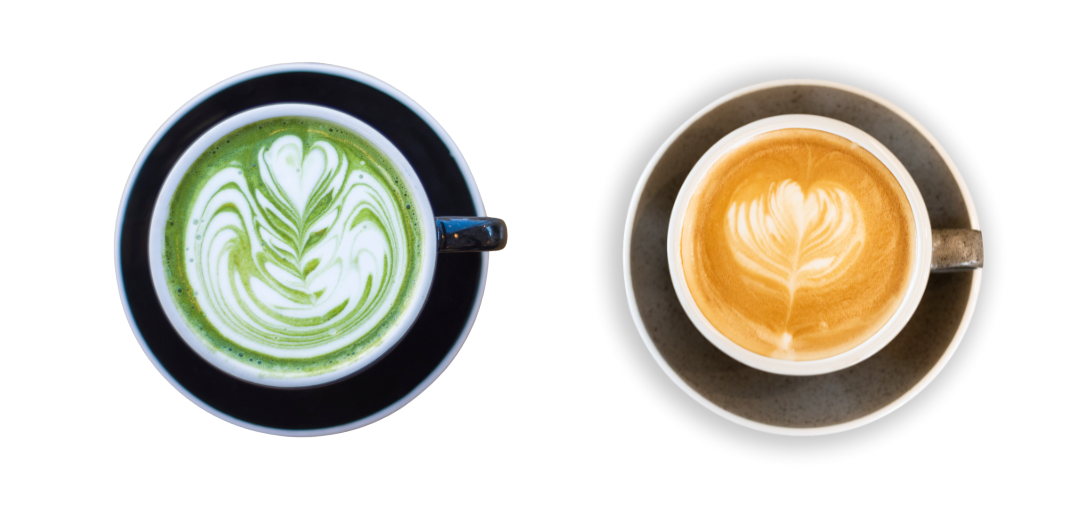
Is matcha latte healthier than coffee?
Matcha green tea latte and coffee both have their own unique benefits and drawbacks. It's difficult to say definitively whether a matcha latte is healthier than a coffee, as this can depend on various factors such as the preparation method, ingredients used, and personal health goals.
Matcha is a type of powdered green tea that is made from shade-grown tea leaves that are ground into fine powder. Matcha is rich in antioxidants, polyphenols, and amino acids, and has been linked to a number of health benefits, including improved heart health, increased energy and concentration, and reduced stress levels.
Coffee, on the other hand, is a rich source of caffeine, which can provide a quick boost of energy and improved mental focus. Coffee also contains antioxidants, which can help to reduce the risk of certain diseases.
It's important to keep in mind that while both matcha lattes and coffee can be enjoyed as part of a balanced diet, excessive consumption of either drink can have negative effects on your health. For example, excessive caffeine intake can lead to anxiety, and disrupted sleep patterns. Additionally, adding too much sugar or high-fat dairy products to your matcha latte or coffee can increase the calorie and fat content of the drink, which is obviously not good for your health.
Ultimately, the best choice for you will depend on your personal health goals, as well as your taste preferences. For me personally, I love coffee and matcha, and enjoy them both in moderation on a daily basis.
Subscribe to this blog's RSS feed using http://premium-health-japan.myshopify.com/blogs/news.atom
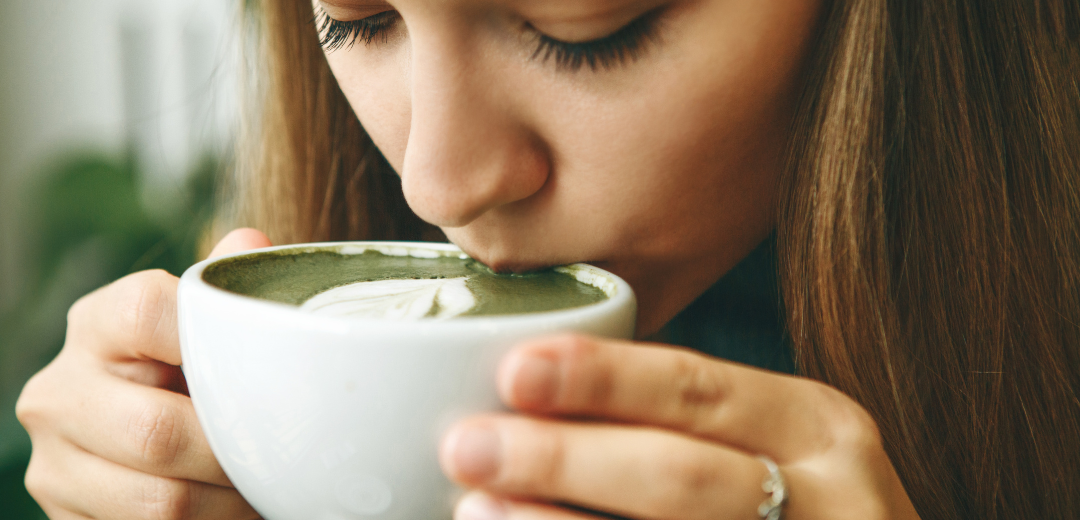
Is it OK to drink matcha latte everyday?
It's generally considered safe to drink a matcha green tea latte every day. Matcha is rich in antioxidants and nutrients that have various health benefits, such as boosting the immune system, improving mental clarity, and promoting heart health.
However, it's important to keep in mind that matcha tea lattes often contain added sugars or syrups, which can contribute to weight gain, tooth decay, and other health problems if consumed in excess. Additionally, matcha contains caffeine, which can cause insomnia, and other side effects if consumed in large amounts.
It's therefore recommended to drink your matcha green tea latte in moderation, and to choose a low-sugar or sugar-free option if possible. It's also important to consult with a healthcare professional before making matcha lattes a regular part of your diet, especially if you have any pre-existing health conditions or take any medications.
While drinking matcha lattes every day can be a delicious and healthy habit when consumed in moderation, it's important to be mindful of the sugar and caffeine content and to consult with a healthcare professional if necessary.

What are the benefits of drinking matcha latte?
Drinking matcha latte can offer a number of potential health benefits, including:
-
Antioxidant-rich: Matcha is made from shade-grown tea leaves that are rich in antioxidants, which can help to protect your cells from damage caused by free radicals.
-
Increased energy and concentration: Matcha contains caffeine and the amino acid L-theanine, which can provide a natural boost of energy and improve mental focus.
-
Reduced stress levels: L-theanine in matcha has been shown to help reduce stress and promote relaxation.
-
Improved heart health: The antioxidants and polyphenols in matcha have been linked to improved heart health by reducing blood pressure and improving cholesterol levels.
-
Boosted metabolism: Some studies have suggested that the catechins in matcha can help to boost metabolism and increase fat oxidation, which may aid in weight loss.
-
Better skin health: The antioxidants in matcha can also help to protect your skin from damage caused by free radicals, which can lead to a more youthful, radiant complexion.
It's important to note that while drinking matcha latte can offer these potential health benefits, it should be consumed in moderation as part of a balanced diet, and excessive consumption of matcha or any other food or drink can have negative effects on your health.
Additionally, it's a good idea to opt for natural sweeteners such as maple syrup, honey, agave, and coconut sugar. Plant-based milks such as coconut milk, oat milk, unsweetened almond milk, as well as good quality matcha powder, all make for a very good recipe and delicious drink!
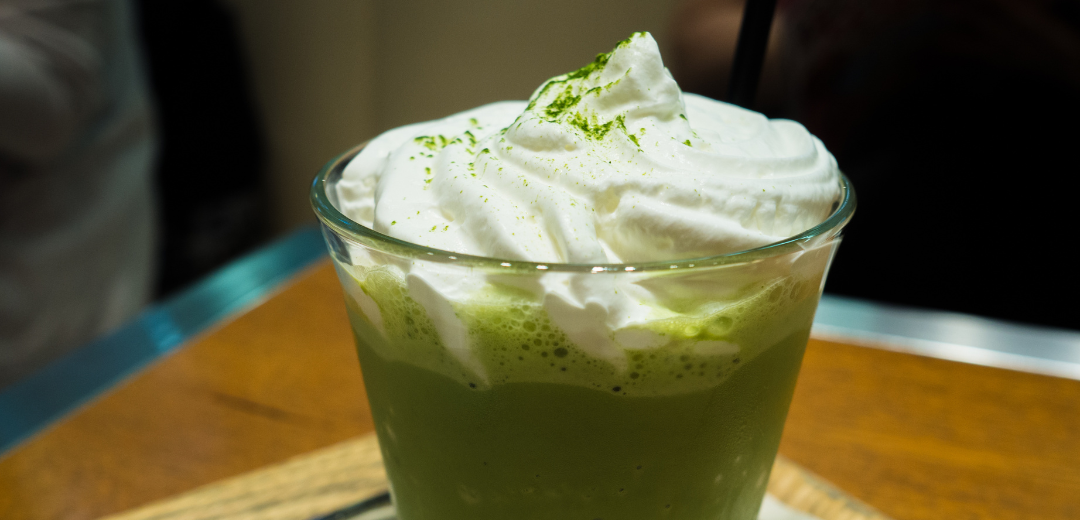
Make a Matcha Latte at Home
Making a matcha latte at home is a simple and easy process. Here's a basic recipe that you can follow:
Ingredients:
-
1 tsp of matcha green tea powder
-
2 oz of hot water
-
8 oz of milk
-
1-2 tsp of honey or sweetener of your choice (optional)
-
Whipped cream (optional)
Instructions:
-
In a small bowl, whisk together the matcha green tea powder and hot water until smooth and frothy.
-
In a saucepan, heat the milk until it starts to steam. Do not boil.
-
Pour the steamed milk into a large mug.
-
Add the matcha mixture to the mug and stir until well combined.
-
If desired, add the honey or sweetener and stir until dissolved.
-
Top with a dollop of whipped cream, if desired.
-
Serve immediately and enjoy your delicious homemade matcha green tea latte!
Note: You can use a milk frother or a whisk to froth the milk if you don't have a steam wand on your coffee machine. You can also experiment with different types of milk to find the one you prefer. Almond, oat, and light coconut milk are all popular options.
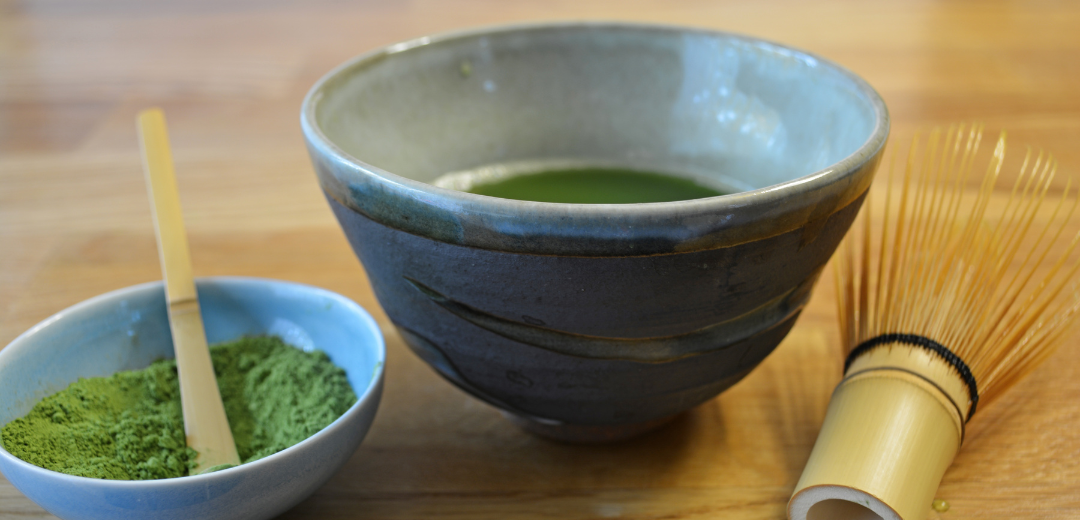
What Equipment Do I Need?
To make a matcha latte at home, you will need the following equipment:
-
Good quality matcha powder
-
Small bowl
-
Whisk or spoon
-
Saucepan
-
Milk frother (optional)
-
Large mug or cup
-
Spoon for stirring
If you want to steam the milk for your latte, you will also need a coffee machine with a steam wand or a separate milk frother. However, you can also heat the milk on the stovetop and use a whisk or a frother to froth it manually.
Having a kitchen scale can also be helpful when measuring out the matcha powder and other ingredients. This will ensure that your latte has the perfect balance of flavours.

What Matcha Powder to Use?
When it comes to making a delicious matcha latte, the quality of the matcha is key. The right matcha can make all the difference in the flavour and texture of your latte.
If you're looking for the best matcha powder for your latte, consider using our first spring harvest organic variety. Matcha from the first spring harvest in Uji is considered the finest and highest quality matcha. Our organic matcha is harvested only once each year, making it a rare and special ingredient.
Organic matcha powder is also a great option for those who are looking for a healthier alternative. Organic matcha is free from pesticides and chemicals, ensuring that you are consuming a pure and natural product.
By using the finest and highest quality matcha powder from the first spring harvest, you can create a delicious and authentic matcha latte that truly stands out. Whether you're a coffee connoisseur or simply looking for a new and interesting way to enjoy matcha, a high quality matcha powder is the perfect starting point.

How to Make Matcha Without a Bamboo Whisk
A bamboo whisk is traditionally used to make matcha tea, but it's not essential to the process. If you don't have a bamboo matcha whisk, you can still make a delicious matcha latte using alternative tools.
Here's how to make matcha without a bamboo matcha whisk:
-
In a small bowl, sift the matcha powder to remove any lumps.
-
Add 2 oz of hot water to the bowl and stir the matcha with a spoon until it is completely dissolved and frothy.
-
If desired, add 1-2 tsp of honey or sweetener and stir until dissolved.
-
In a saucepan, heat the milk until it starts to steam. Be careful not to boil it.
-
If you want to froth the milk, use a milk frother or a kitchen whisk to create a creamy and frothy texture.
-
Pour the steamed milk into a large cup.
-
Add the matcha mixture to the cup and stir until well combined.
-
Top with a dollop of whipped cream, if you choose.
-
Serve immediately and enjoy your delicious matcha latte without a bamboo whisk!
Note: A blender or a hand-held frother can also be used to froth the milk if you don't have a milk frother. You can also experiment with different types of milk to find the one you prefer. Unsweetened almond milk and oat milk are popular options.
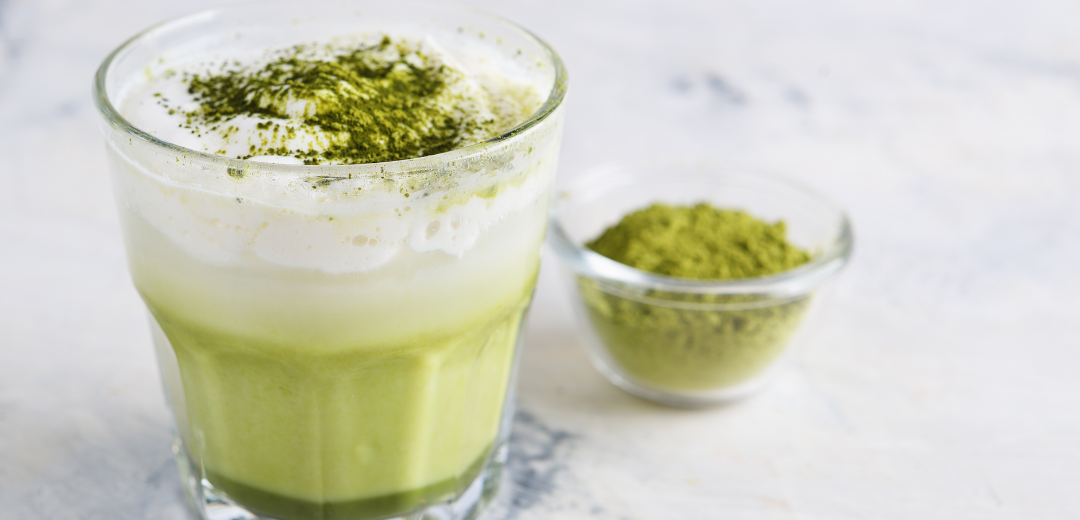
Our Popular Matcha Recipes You'll Enjoy
Here are some popular matcha recipes that you'll love:
-
Classic Matcha Latte: This is a traditional and easy recipe for making a delicious matcha latte at home. Simply mix together matcha powder, hot water, and steamed milk to create a creamy and frothy drink.
-
Matcha Smoothie: For a refreshing and nutritious drink, try making a matcha smoothie. Simply blend together high quality matcha powder, almond milk, frozen bananas, and your favourite fruit to create a delicious and healthy beverage.
-
Matcha Iced Latte: If you prefer your matcha drinks cold, try making a matcha iced latte. Simply mix together matcha powder, cold water, and your favourite milk over ice to create a refreshing and revitalizing drink.
-
Matcha Latte with Almond Milk: For a nutty twist on a classic matcha latte, try making a matcha latte with almond milk. The almond milk gives the latte a creamy and nutty flavour that complements the earthy flavour of matcha perfectly.
-
Matcha Green Tea Frappuccino: If you're looking for a sweet and creamy matcha drink, try making a matcha green tea frappuccino. Simply blend together matcha powder, cold water, maple syrup, and coconut milk to create a delicious and creamy frozen treat.
These are just a few of the many matcha recipes that you can try at home. Whether you prefer your matcha hot or cold, sweet or savory, there's a matcha recipe out there for you!
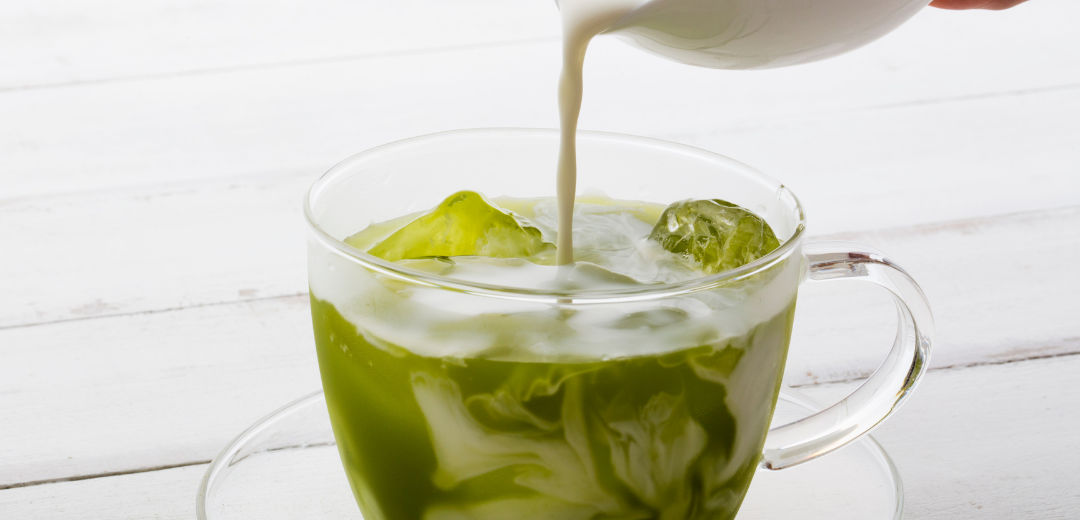
Which milk is best with matcha?
The best milk for a matcha latte depends on personal preference and dietary restrictions. Here are some of the most popular options:
-
Cow's milk is the traditional choice for matcha lattes, as it provides a creamy, rich flavour that complements the earthy taste of matcha. Whole milk is the most commonly used type, but skim or low-fat milk can also be used for a lighter version.
-
Soy milk is a popular alternative to cow's milk, and is particularly suitable for those who are lactose intolerant or vegan. Soy milk provides a slightly nutty flavour that pairs well with matcha.
-
Almond milk is another popular choice for those who are lactose intolerant or vegan, and also provides the slightly sweet, nutty flavour that complements matcha.
-
Oat milk is a popular alternative to dairy milk, and its creamy, slightly sweet flavour can complement the earthy taste of matcha powder. It's also a good choice for those who are lactose intolerant or following a plant-based diet, as it's dairy-free and vegan-friendly.
-
Coconut milk is another alternative to cow's milk, and is particularly suitable for those who are looking for a sweeter, creamier flavour. However, it is higher in saturated fat than other milks and may not be suitable for those following a low-fat diet.
Ultimately, the best milk for a matcha latte is one that complements the flavour of matcha and suits your personal taste preferences and dietary restrictions. You may need to experiment to find the perfect milk for you.
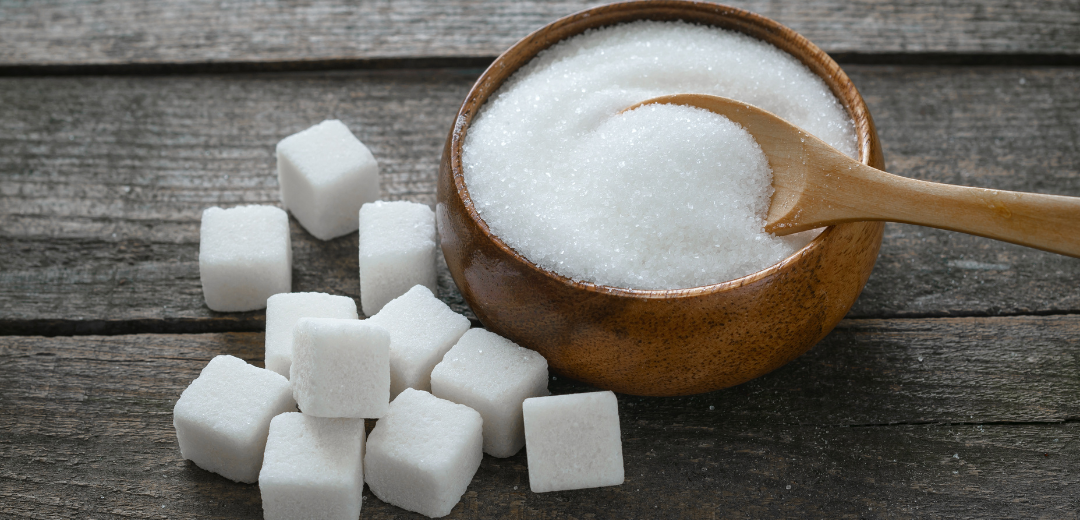
Do you put milk and sugar in matcha?
Whether to add milk and sugar to matcha is a matter of personal preference. Some people prefer to enjoy matcha on its own, with just water, in order to fully experience the natural flavour and nutritional benefits of the tea.
Others prefer to add milk and/or sugar to their matcha to create a sweeter, creamier drink. Milk can help to balance out the natural bitterness of latte grade matcha and make it more approachable for those who are new to the taste. Adding sugar can further enhance the sweetness of the drink.
It's important to note that adding milk and sugar to matcha can dilute its health benefits and increase the calorie content of the drink. If you're trying to maintain a healthy lifestyle, it may be best to enjoy your matcha with just water or a plant-based milk, and to limit the amount of sugar you add (try maple syrup, agave, or honey as an alternative to sugar). Opting for ceremonial grade matcha is the best choice as it's not bitter to taste and you'll be less inclined to add sugars or sweeteners.
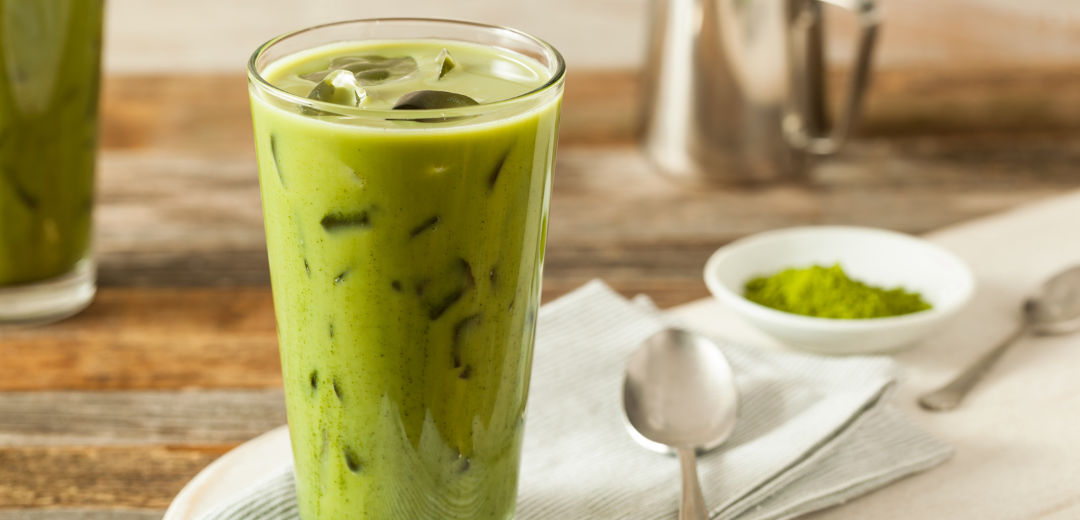
Can you just add matcha to milk?
Yes, you can add matcha to milk to create a simple and delicious drink. Simply mix your desired amount of matcha green tea powder with a small amount of warm milk to create a paste, then add the remaining milk and heat to your desired temperature. You can also froth the milk to create a creamy, latte-style drink.
It's important to note that when adding matcha to milk, it's best to use a high quality matcha powder to fully experience the flavour and various benefits of the tea. Using low quality or expired matcha can result in a drink that is bitter or off-tasting.
Adding matcha to milk is a great way to enjoy the tea in a simple, comforting way. Experiment with different ratios of matcha to milk to find your personal preference.


